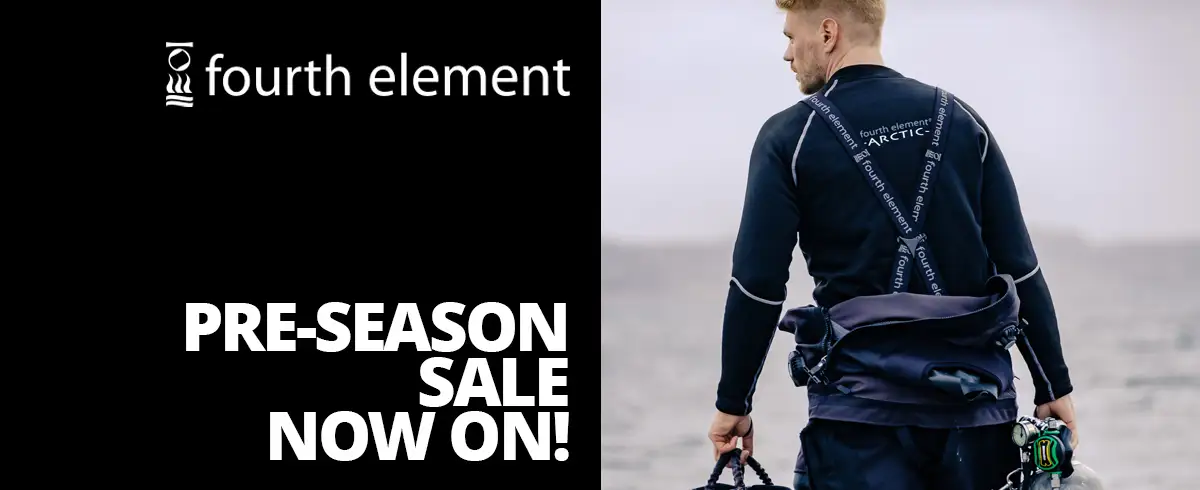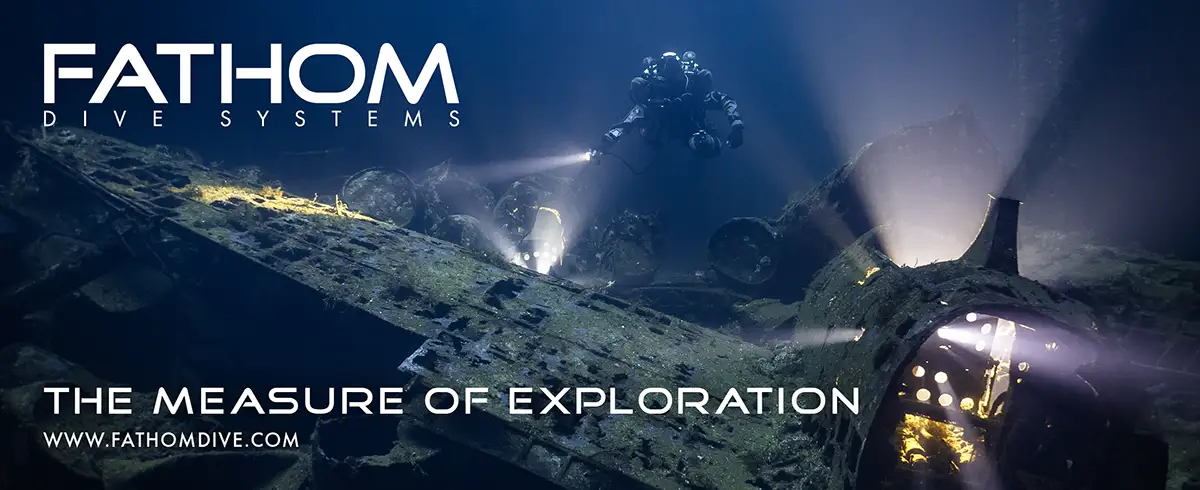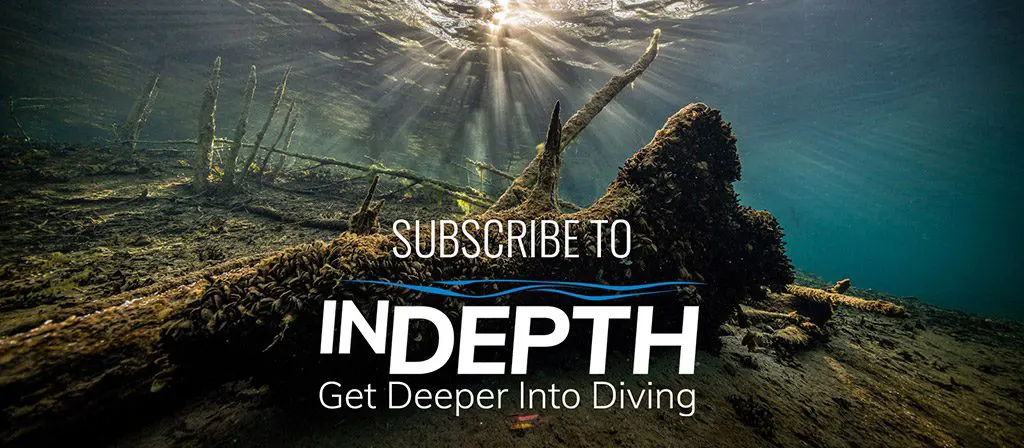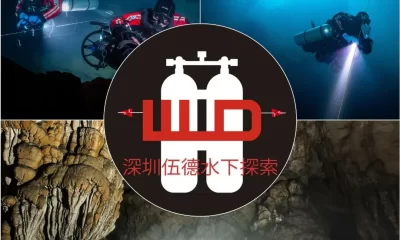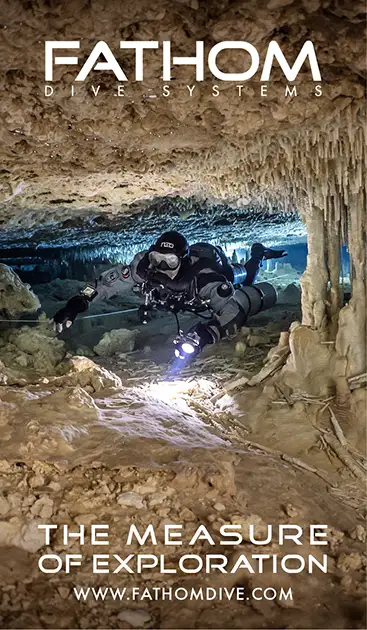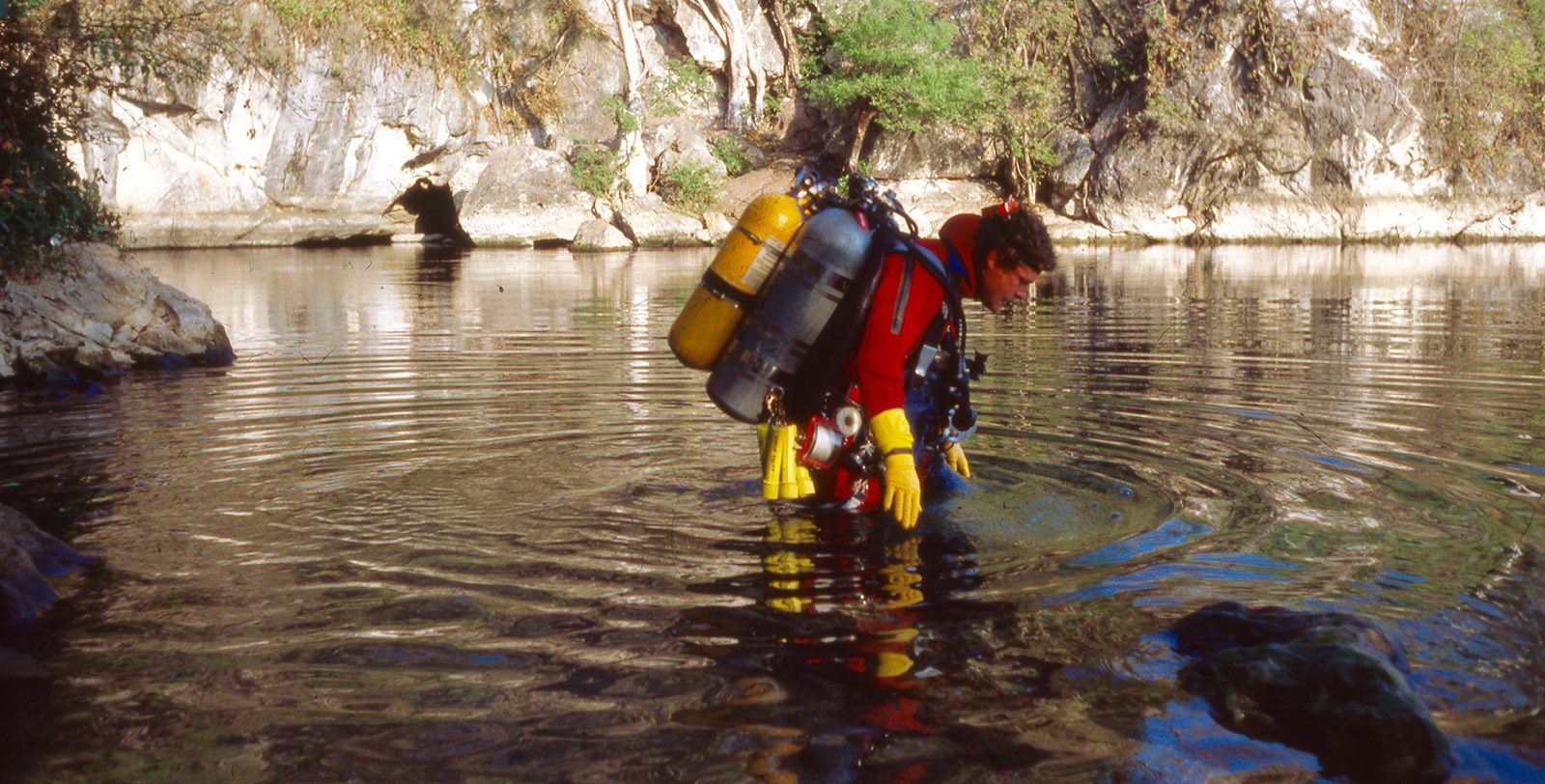
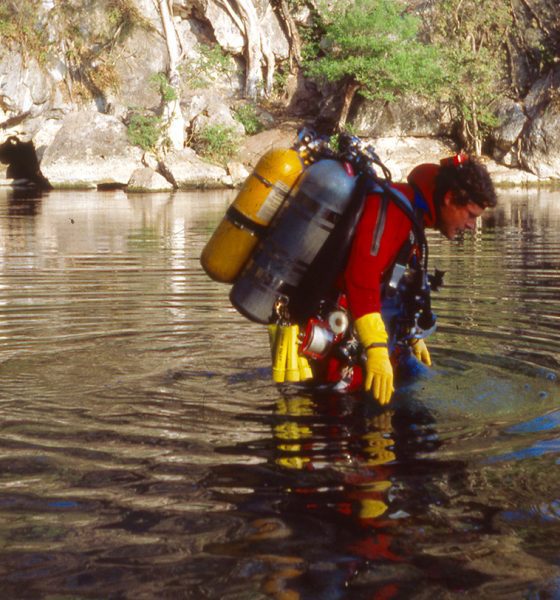
Cave
Let There Be Mix!
Simon Pridmore’s latest book, “Technically Speaking: Talks on Technical Diving Volume 1: Genesis and Exodus,” takes a deep, deep dive into the early days of technical diving and explores how it all happened, why it all happened and who made it all happen. As he observes, it was the interaction of many key individuals that provided the spark that flared into what we would come to know as technical diving. Here, Simon has kindly allowed us to share a chapter of the book called, “Crucible.” Indeed, it was a crucible!
by Simon Pridmore. Images from the aquaCORPS archives unless noted. Sheck Exley photos are courtesy of Brian Udoff and Mary Ellen Eckhoff unless noted. Bill Stone, Wakulla and Huautla photos courtesy of US Deep Cave Diving Team unless noted. Lead image: Sheck Exley about to splash at Nacimiento Del Rio Mante. Photo courtesy of Randy Bohrer.
🎶 Pre-dive Clicklist: Truckin’ by Grateful Dead 🎶
Today, when you execute planned decompression stop dives using mixed gas and multiple gases, with open-circuit or closed-circuit hardware, in the caves of Florida, Russia or Mexico, the wrecks of Scapa Flow, the Great Lakes or Truk, the abandoned flooded mines of Finland and South Africa or the walls of Palau – whichever of the alphabet soup of agencies trained you in this kind of diving – you will be carrying the same equipment, configured in one of a few recognized, accepted and well-tried ways, and using similar combinations of gases, decompression tables and procedures.
These methods and technologies were born among individuals and groups of sport divers in the USA several decades ago. Not only did these pioneers use their own experiences, enterprise, and creativity to work out how to make safer, more efficient and longer-range extreme sport dives, but they also borrowed know-how from the military and scientific diving communities and turned it to their needs.
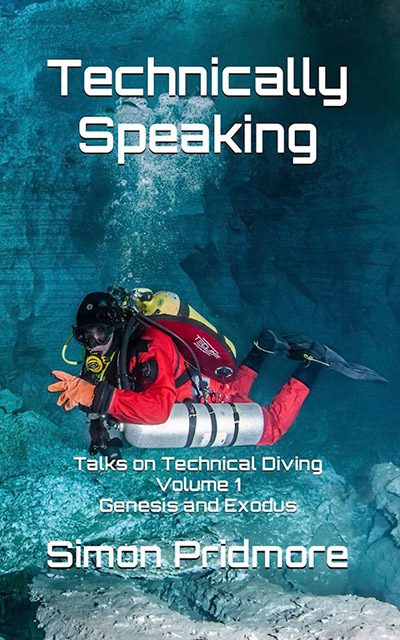
Technical diving was the metamorphosis of these people and their efforts into a coherent movement. But was it really a movement? At times during the first half of the 1990s, for insiders, it certainly felt like it—even with quasi-religious and revolutionary undercurrents.
After all, what do both religions and revolutions share?
• An origin story
• An opposing force
• Messiahs, apostles, and disciples
• Martyrs, heroes, and legends
• Sacred texts and propaganda
• Slogans and symbols
Technical diving had all of these. The only thing it lacked was the kind of inspired leader with a brilliant idea that religions and revolutions coalesce around. This may have been for the best. After all, the driving forces in the disparate diving tribes who took technical diving forward were not the sort of folk who typically look for someone to lead them. They were mostly explorers with ambitions to go somewhere, see something,or do something extraordinary, and they needed the means to achieve their goals and ensure as far as possible that they got back home again afterwards.
Getting back home again was an essential element of this philosophy. Otherwise, what would be the point? Consciously or otherwise, they were borrowing the sentiment expressed by US President John Kennedy in 1961, that the aim was not just “landing a man on the Moon”, but “returning him safely to the Earth”. Safety was the major concern in technical diving–and space exploration–from the beginning, although the opposition within the mainstream sport diving community did not see it that way. And, alas, there were times in the early days when tragic bursts of accidents didn’t make it look that way either.
However, in retrospect, technical diving was neither revolution nor religion. It came more from chemistry and physics than philosophy or politics. It was a product of several ingredients coming together simultaneously in the crucible of the US extreme diving scene in the 1980s and onward.
Some of the ingredients were situational. The development of the internet and the resulting flattening world offered improved communications and coordination, and technological advances in blending and boosting gave sport divers easier and safer access to gases. Increased awareness, accessibility, and popularity in turn led to the establishment of businesses providing more professional equipment and consistent training systems.
But the most important ingredients were human, and, in the very beginning, it was the interaction of a handful of key individuals that provided the spark that flared into what we would come to know as technical diving.
These people are the subjects of this chapter. One was a notable guru from the military, commercial and scientific diving worlds who lent his expertise, status and gravitas to ambitious sport divers lacking in all these much-needed areas. One was a true revolutionary. The others were explorers.
All were pioneers, all had unconventional methods, and none could be easily confined or defined. It is curious that, by the end of the 1990s, when technical diving had become part of the mainstream, for a variety of reasons, not one of the five was still part of the scene. One had been lost. Others had drifted away. They had changed the sport diving world but were no longer part of it. Those for whom change had been the goal dropped out. Their work was done. Those whose influence on the sport had been incidental to their other work just continued along different paths.
They all became celebrities, although none sought fame. The community they had helped create needed icons and their achievements happened to be iconic. They were the patron saints for the new acolytes and provided a good part of the myth and legend on which the sport was founded. Their places in technical diving’s Asgardian Halls are assured.
The actual architects of technical diving would be the savvy entrepreneurs, inventors and engineers, charismatic prophets, tireless trainers, cosmopolitan travelers, gifted writers, and natural marketers within the community who would keep the flame alight. But without these five people and their combinations and interactions, there would have been no spark.
Did it all begin with the rebreather guy? Or the cave diver? Or the decompression guru? Or the captain? Or did it really start when the tech geek started writing about it all? As you look back in time, you find that the lines connecting them go all over the place; they cross, they separate, they reunite and then they spin off in different directions. I am tempted to pursue this obvious cave-diving metaphor further but instead; I will just tie it off here and leave you to attach more line as you wish.
Sheck Exley: Live Oak, Florida
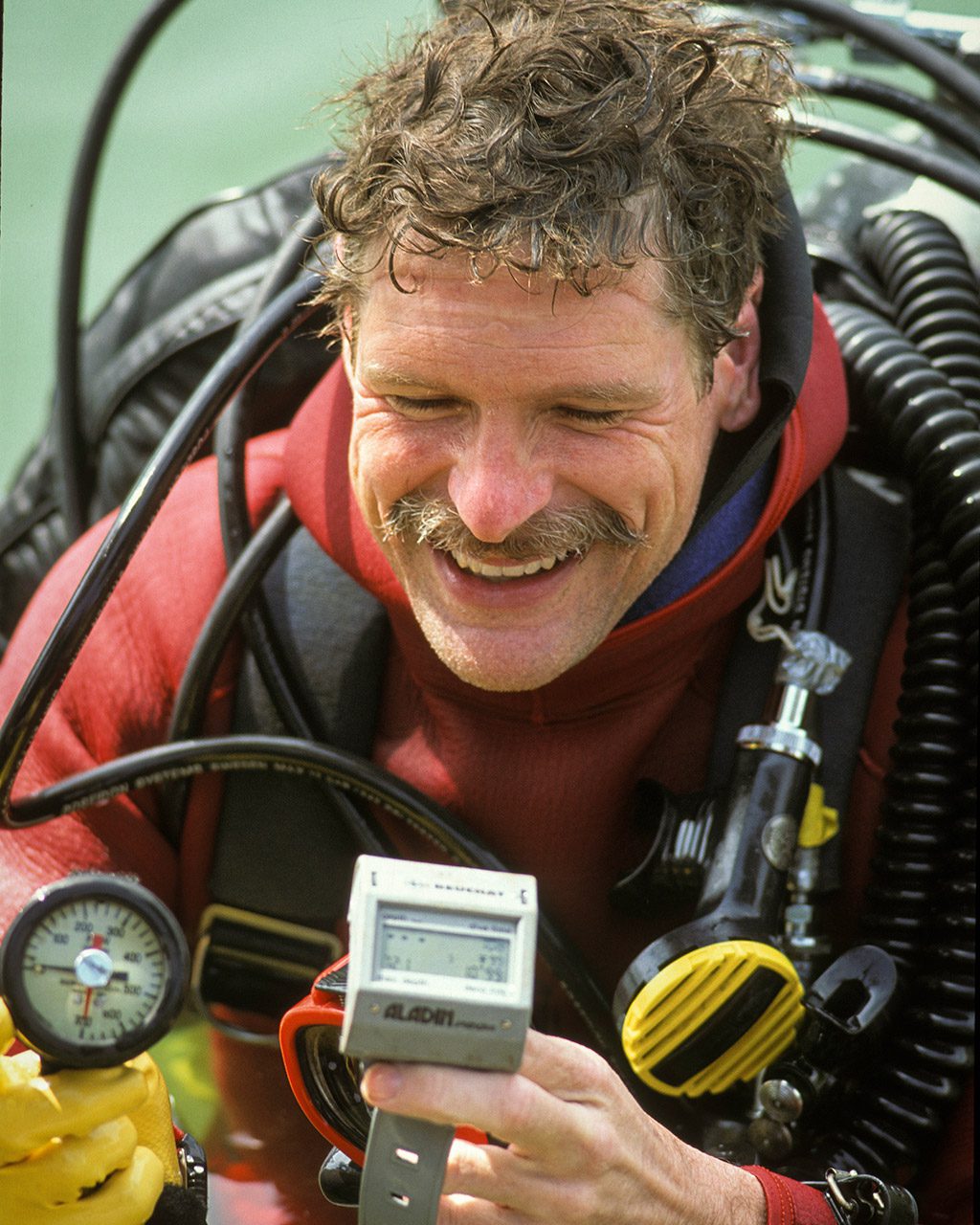
Sheck Exley was part of the 1960s generation of US cave divers, and many considered him the greatest of them all. In the mid-1980s though, Exley was not so sure. He had a problem, and it was becoming increasingly clear that he was going to have to solve it. His problem was helium. He didn’t like it and he didn’t trust it. Diving with helium got you bent or got you killed. But, if he didn’t start using it, he was going to get left behind.
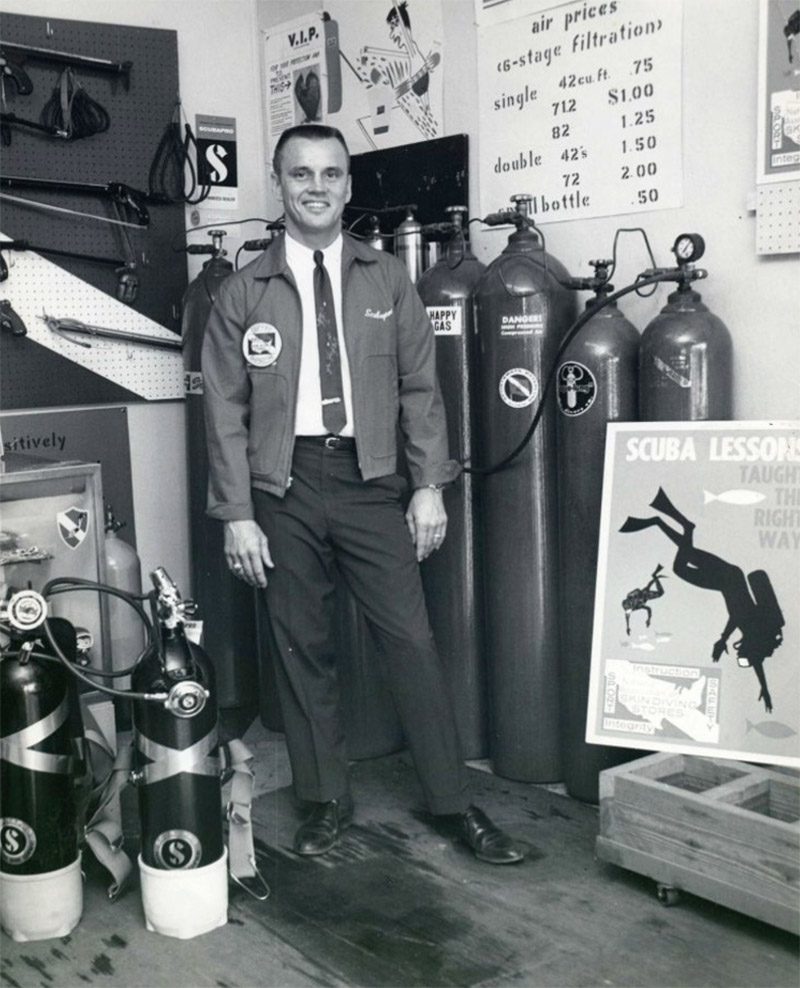
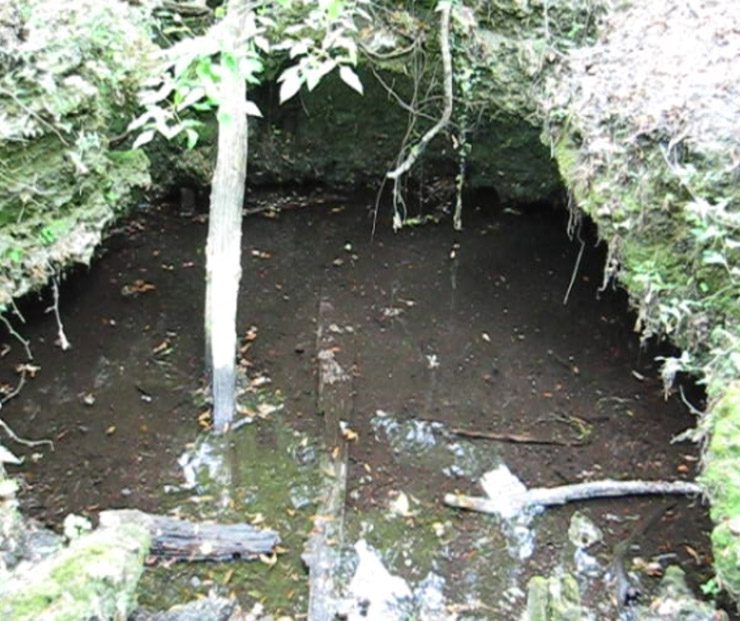
In 1970, Hal Watts, one of the country’s earliest deep cave explorers and someone Exley looked up to, had suffered serious decompression sickness following a heliox dive in a sinkhole. Then in 1975, Exleys’ best friend Lewis Holtzindorff was the first to use mixed gas on a cave dive and died in the attempt, although it was not the helium that killed him, it was the pure oxygen he was breathing too deep during his decompression stops that caused him to convulse and drown. Nevertheless, as far as Exley was concerned, this was a further sign that helium was to be avoided. He would stick to diving with air. He liked air, he trusted the air decompression tables and he knew he had a good tolerance for narcosis.
In 1980, Exley held the record for the deepest cave dive on scuba at 104m (340ft). Then, cave diver Dale Sweet broke the record on a heliox dive to 110m (360ft) to a room he named the Flag Room in Diepolder System. Exley took notice. Six months later he successfully performed the same dive to the same depth using air. Who needed helium?
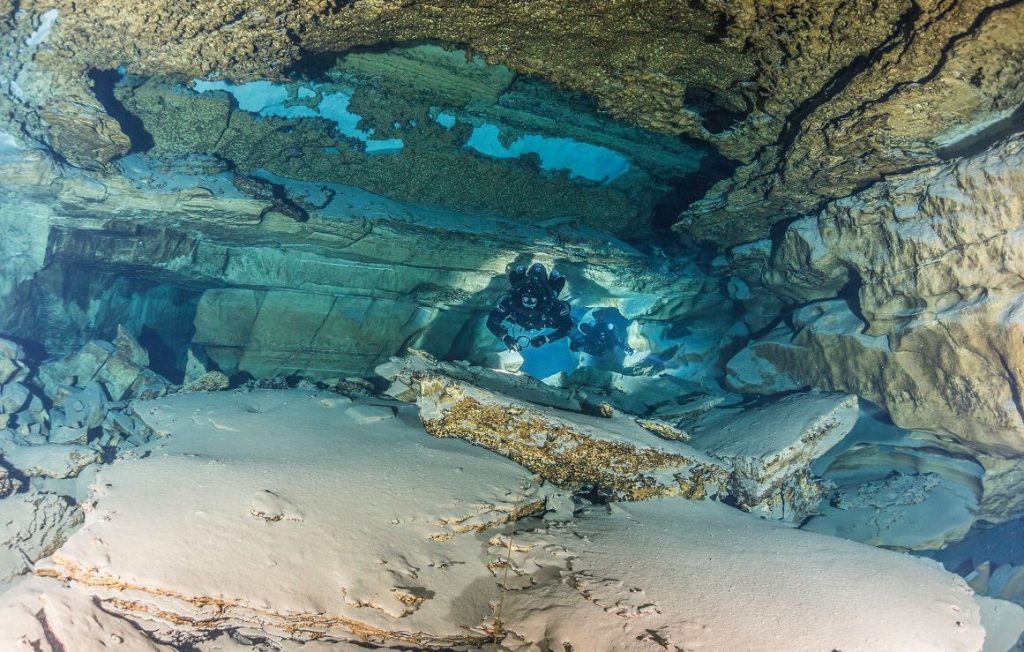
However, the following year, German cave diver Jochen Hasenmeyer descended to a depth of 145m (476 ft) in the Vaucluse cave in France on heliox and completed a successful ascent. Then in 1983, Hasenmeyer extended his record to 200m (656 ft).
Back in the USA, Exley was breaking distance world records in cave diving for fun, but in terms of depth he was falling behind and it was his aversion to using helium that was holding him back.
Exley knew Hasenmeyer and had dived with him. Hasenmeyer was no fool and this gave Exley confidence. He obtained some commercial diving heliox tables that bottomed out at 122m (400ft) and did a couple of workout dives in Florida. These went well. Then he went off to Mexico with the aim of going deeper. He was a mathematics teacher by profession and, confident of his math skills, he extrapolated the commercial tables to greater depths.
In early 1987, he used trimix to dive to 158m (520ft) in Nacimiento Del Rio Mante in the Sierra de Cucharas mountains, Mexico and two months later he pushed the same cave to 201m (660ft). He had caught up with Hasenmeyer. But, in Exley’s own words, at the end of these dives, he was “wasted”. They took everything out of him. He knew he had extrapolated the commercial tables as far as he could. He had reached the outer limits of their validity and he could no longer trust them. If he was going to go deeper, he would need to find another way.
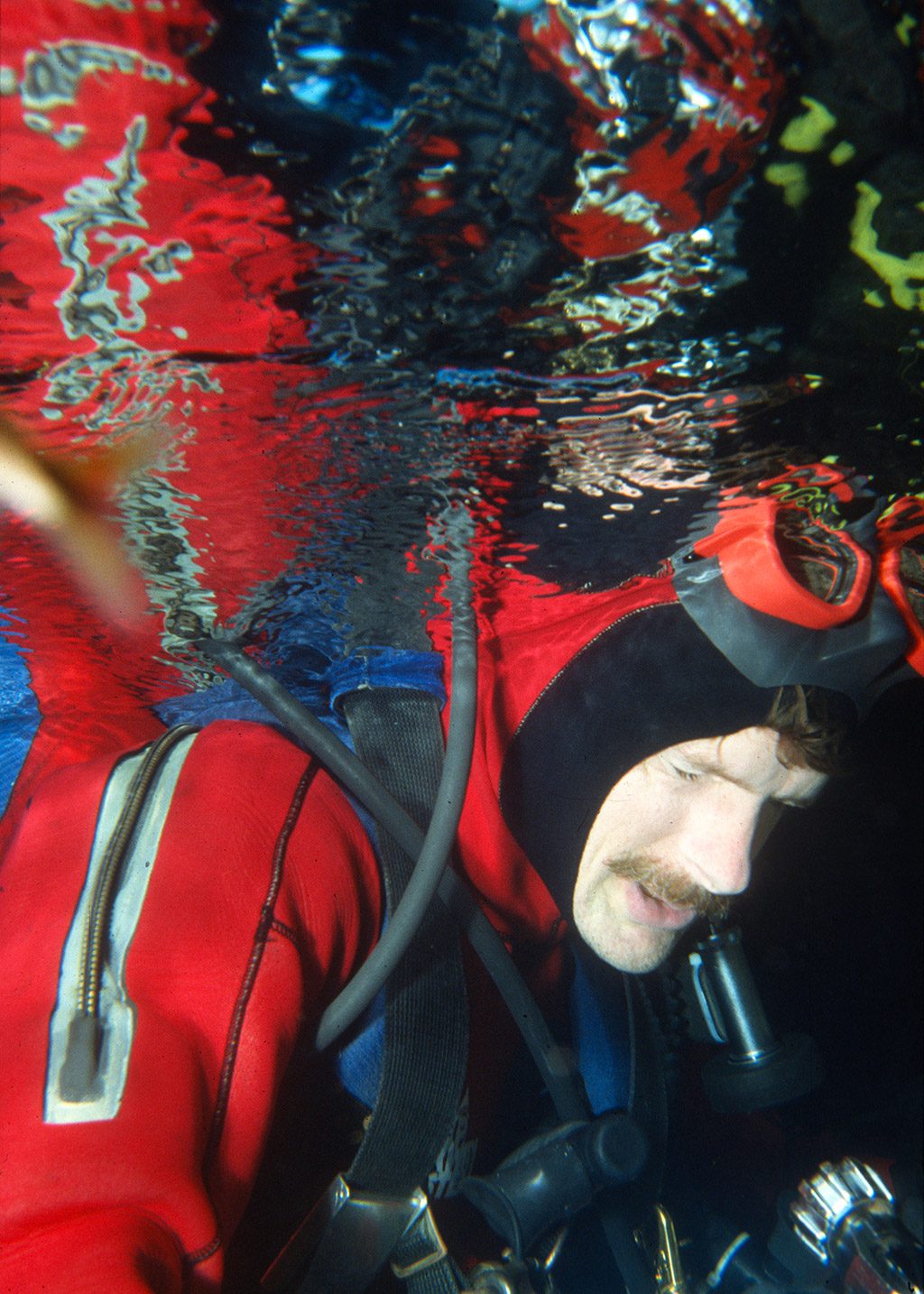
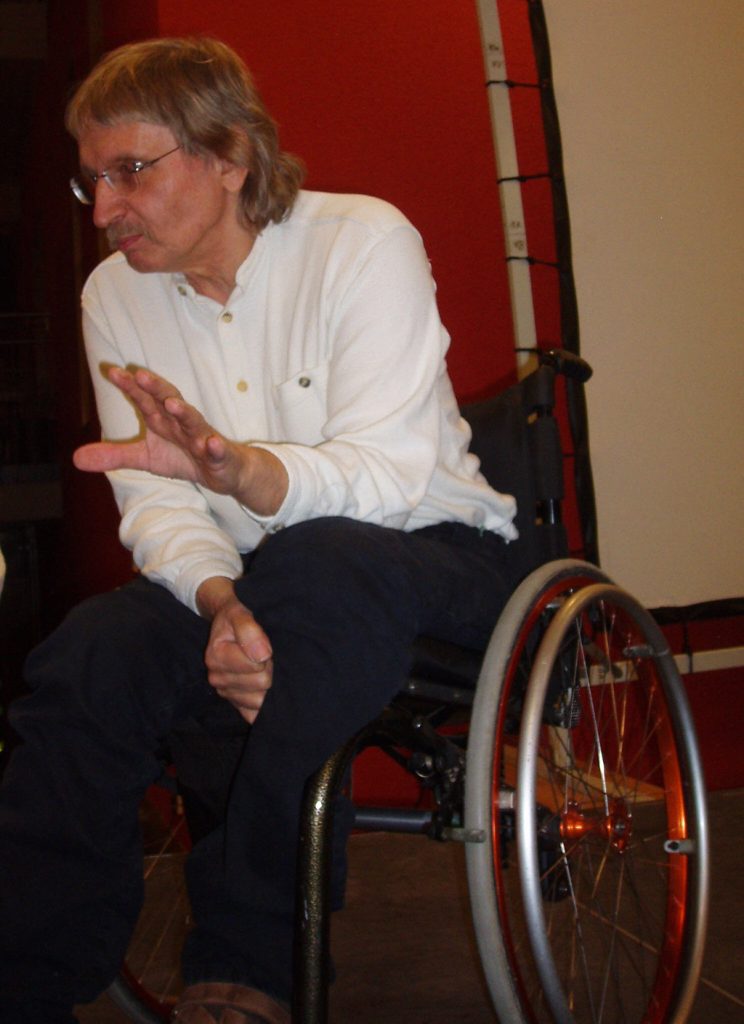
Earlier, at around the same time that he was preparing for the Mante dives, Exley was invited by Dr Bill Stone to join his Wakulla Springs project.
Bill Stone, Exley: Huautla Plateau, Mexico

Like Exley, nobody ever accused Bill Stone of doing things the normal way. He was a caver first, then an expedition caver. He started in Pittsburgh, then moved on to West Virginia, before heading south to Austin, Texas primarily because it was close to some great caves, not only in the USA but in Mexico too.
It was in Texas that he learned to dive in caves, but it was a visiting British cave diver who taught him, so he acquired UK-style side-mount sump diving techniques. At the time, this was certainly not the way Americans dived in caves. But Stone was never part of any community. He was always an outsider.
In 1979, he jammed a regulator into his mouth and dropped into the San Agustín sump, a narrow, twisted, flooded tunnel over a kilometer below the surface of the Huautla Plateau, a limestone mountain in Southern Mexico with an enormous network of caves beneath.
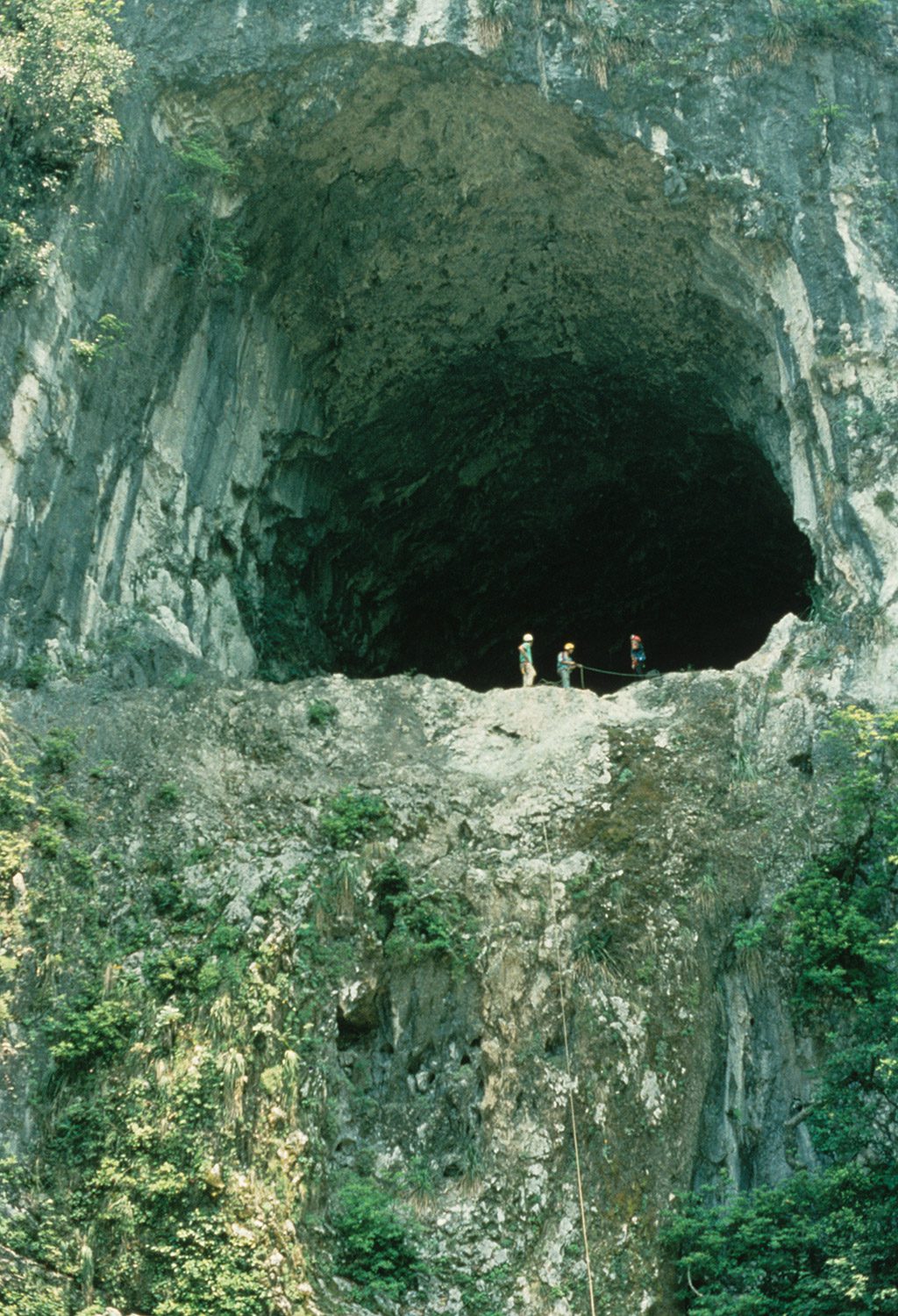
To save weight and bulk during the long multi-day descent to the sump, he had brought neither fins, BCD or weights and had only two small side-mounted pony cylinders to breathe from. The buoyancy of his wetsuit meant his only possible strategy was to crawl upside down along the tunnel ceiling in the style of vampires and other demons in horror movies. He scrabbled along, finding no end to the sump. Meanwhile, he was going deeper and consuming 100 psi from the pony cylinder with each breath. He would have to go back. But, before he did so, he turned and looked down.
“The tunnel’s floor had simply disappeared. In its place stretched a crystal-clear sea of unfathomable depth.”
Following the cave through this sump to see what lay beyond became an obsession that would haunt Stone for the next 15 years. He anticipated that he would need to go much deeper to get through it and this time he sought advice and expert tuition closer to home and contacted Sheck Exley. Stone would later credit Exley not only for giving him the necessary skills to pursue his quest but also for saving his life when he found himself disabled by narcosis on an air dive to 70 m (230 ft) inside Florida’s “Eagles Nest” cave.
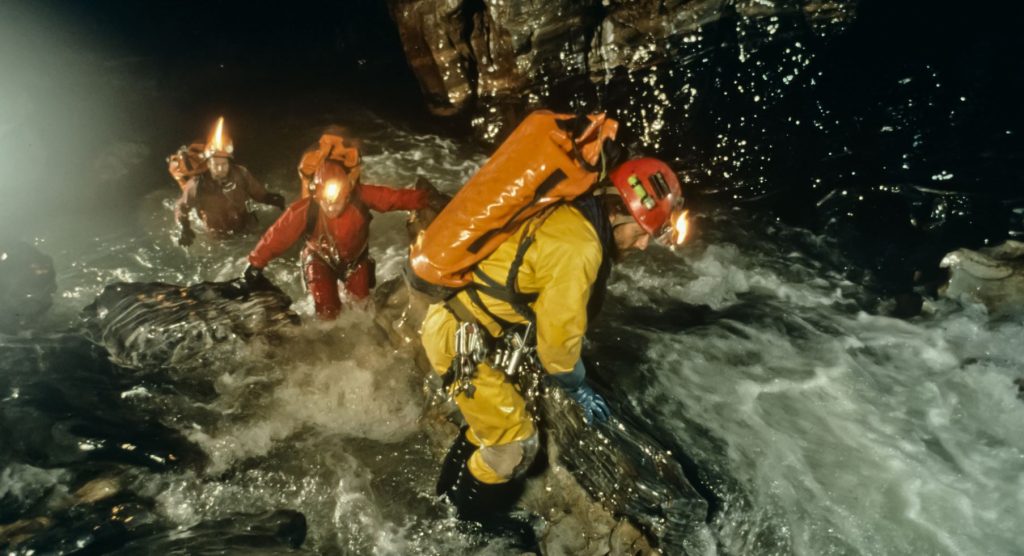
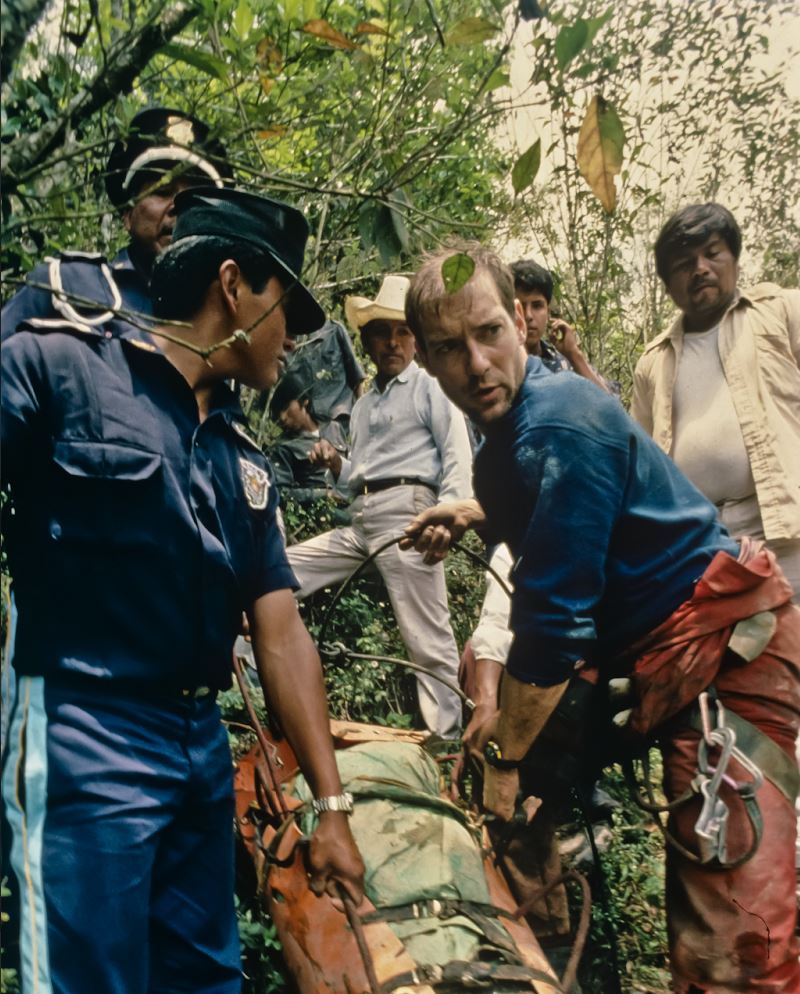
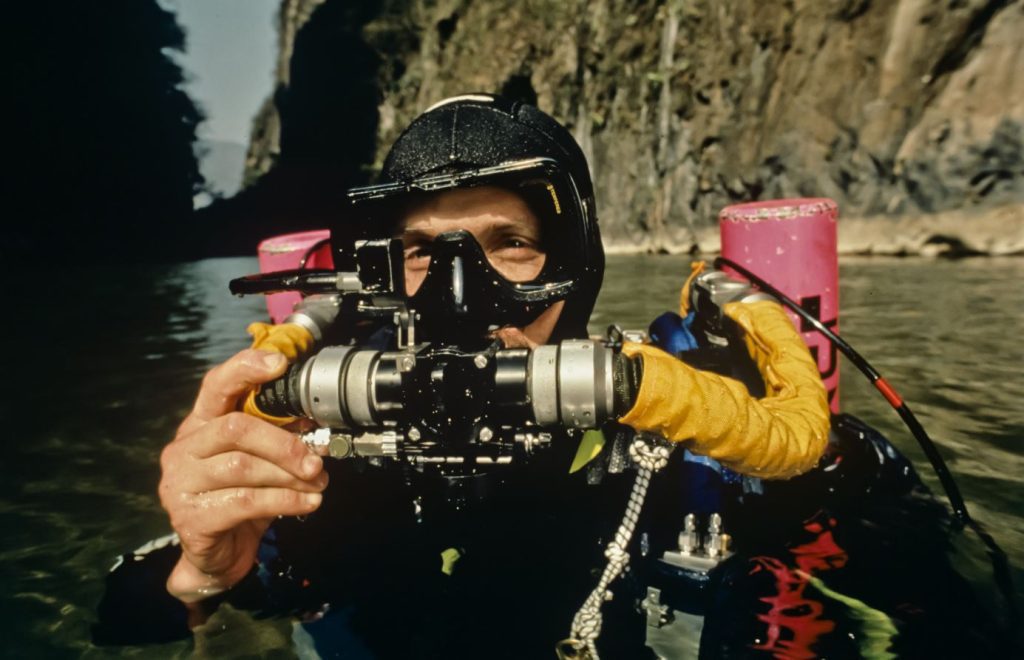
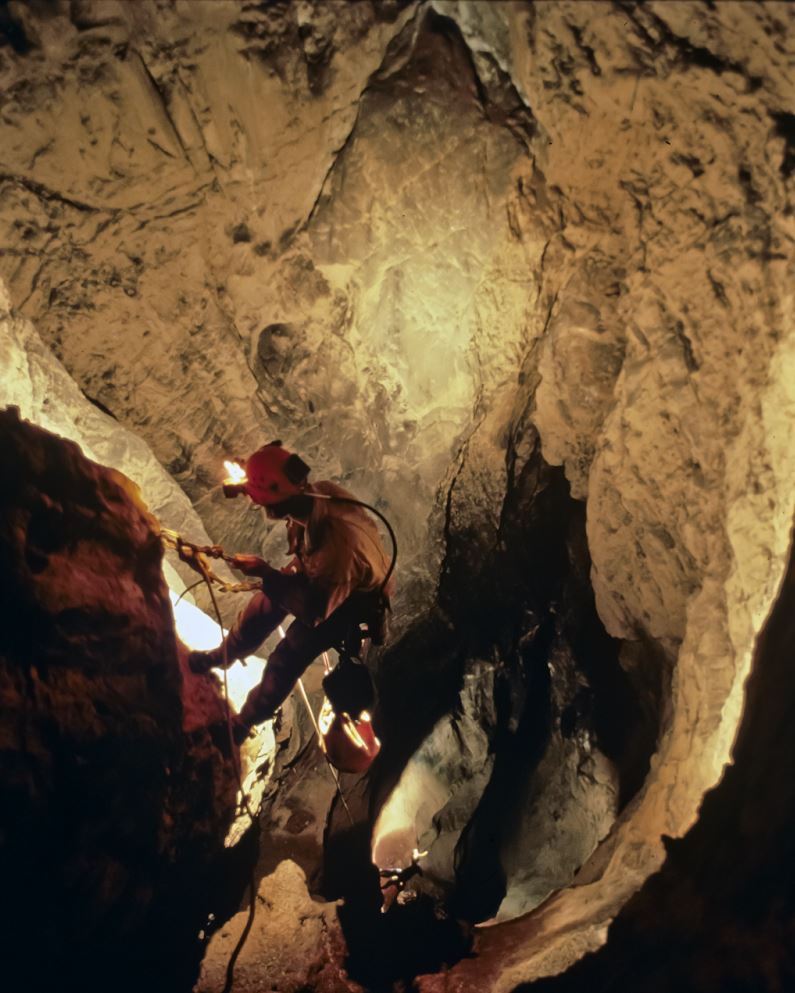
Next, Stone founded the United States Deep Caving Team, a rotating non-profit group of expert volunteer cavers. Further expeditions to Huautla in 1981 and 1984 failed to realise his ambition. The 1984 trip, which tried to reach the far side of the San Agustín sump from another cave, which Stone thought might connect, involved diving through so many sumps just to get to virgin territory – and diving to depths as great as 54m (180ft) – that they no longer had enough air to push on further and be able to return.
They had reached the limits of the available technology. The logistics and time limits imposed by open circuit scuba would not permit further progress. Stone still believed the Huautla cave continued beyond the sump. He just had to find another means to get there.
One of the members of the Deep Caving Team was Dr John Zumrick, whose full-time job was Chief Medical Officer at the Navy Experimental Diving Unit (NEDU). After the 1984 trip, he suggested Stone look at the closed-circuit scuba diving systems that the US Navy was using.
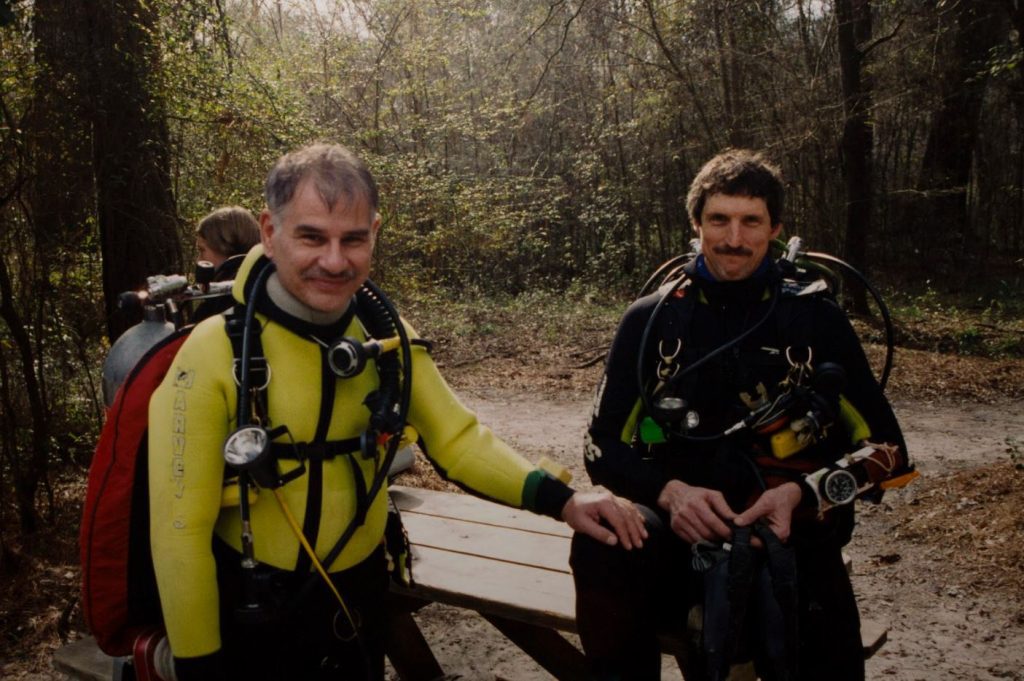
Stone quickly identified this as the technology he needed but concluded that the Navy units were too fragile to be transported along several kilometres of tortuous cave passage. He was to spend the next three years designing and then building the first version of his Cis-Lunar rebreather.
When it eventually appeared, it weighed 93 kg (205 lbs) and it was called FRED (Failsafe Rebreather for Exploration Diving). FRED was a big boy – someone once said it was like diving with a Volkswagen on your back – but at this point, Stone was not concerned with size. Once he knew the technology worked, he could concentrate on making it smaller. As it was to be used for cave exploration, in addition to being indestructible, it had to be, in Stone’s engineering parlance, “fault-tolerant from the ground up”. Redundancy was also essential. In fact, the unit was two separate rebreather systems in one very rugged box.
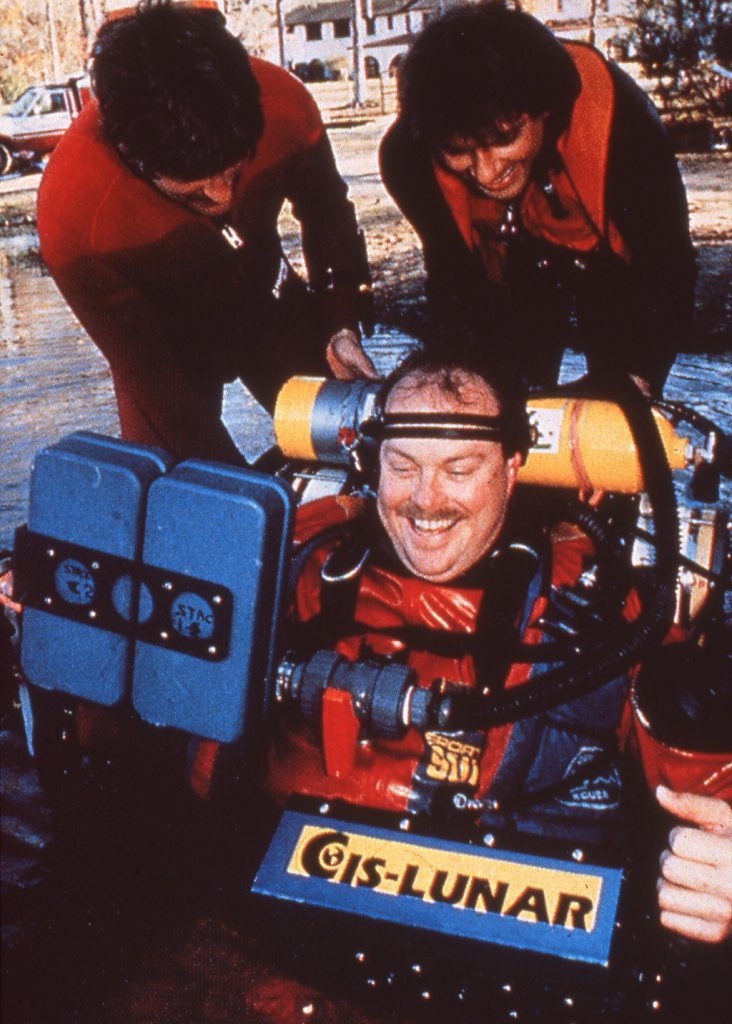
The Cis-Lunar Mark I was supposed to be finished in 1986 in time for Stones to take it to Andros in the Bahamas for an expedition being run by Rob Palmer’s International Blue Holes Project. Stone had promised Palmer a rebreather but as the deadline approached, it was still not ready. However, Palmer still wanted to take a closed-circuit unit with him, and, by chance, he found an alternative option in the UK.
Stuart Clough and his company, Carmellan Research, had a rebreather they were developing, and he agreed to bring it over to Andros. But Clough could only give the project 10 days of his time, so after he and his team had departed, Palmer and Stone were still left with a lot of Blue Hole cave diving to do.
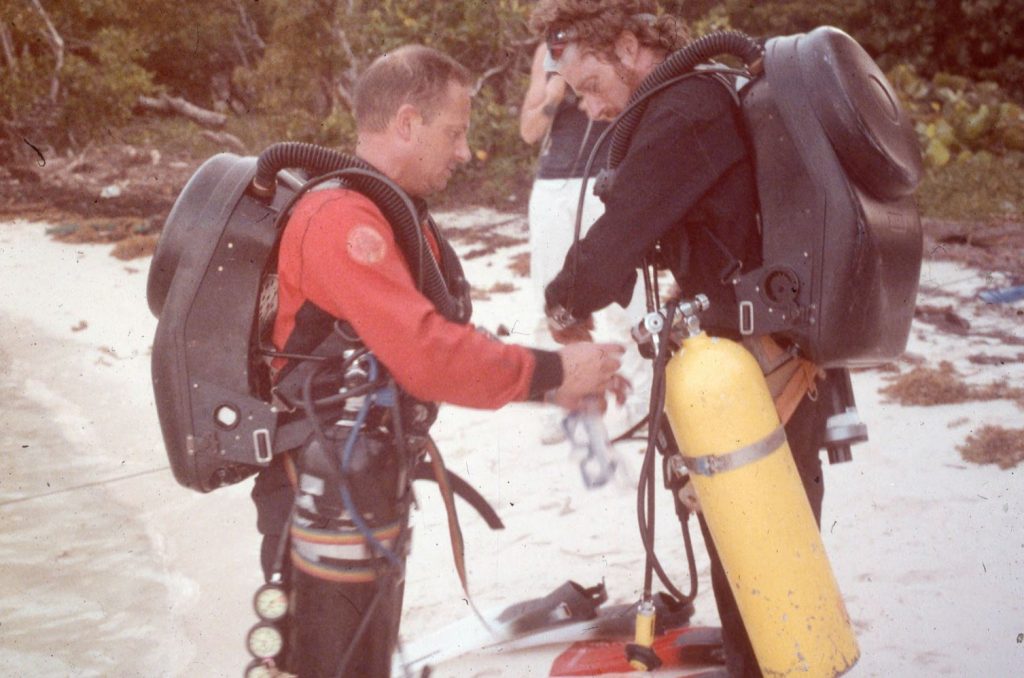
They spent the following month diving with heliox on open circuit, collecting stalagmites, accumulating data, and gaining mixed gas diving experience that was to be extremely valuable for Stone in Wakulla Springs the following year. Zumrick again was a great help, giving Stone advice on decompression schedules for helium-based mixtures based on NEDU experiments.
An even more valuable consequence of the trip was the connection Stone made with Dr Bill Hamilton, a decompression table specialist who had been working with Clough and had come out to Andros as part of the Carmellan team.
Stone and Hamilton were fellow Texans but, beyond that, they found in each other a kindred spirit. They were both unconventional explorers, each in his own field, with the desire to look for solutions that others could not see and the ability to find them.
Dr Bill Hamilton: Tarrytown, New York
US Air Force veteran Dr Bill Hamilton earned his doctorate degree in physiology and biophysics at the University of Minnesota. In 1964, he began work as a scientist and director of Ocean Systems, an environmental physiology and diving research lab in Tarrytown, NY. He and his staff conducted extensive research on the effects of gases both under increased pressure and in hypobaric environments. This work led to the development of decompression modeling tools and operational procedures for divers, astronauts, hyperbaric chambers, and tunnel and caisson workers.

In 1976, Hamilton set up his own physiology consulting firm, Hamilton Research Ltd. He worked extensively with oil companies, the military, and others to develop procedures and techniques that could mitigate the effects of High-Pressure Neurological Syndrome (HPNS).
He and his team also developed the Diving Computational Analysis Program (DCAP), a computer program that could create decompression procedures and schedules for a wide variety of exposures to pressure, including submarine escape, space travel, deep commercial diving, caisson and tunnel work.
This program revolutionized the way decompression analysis was done and Hamilton Research began working with navies and research centers around the world. From the mid-1980s onwards, an irresistible attraction to the edge of the operational envelope led Hamilton to extreme sport divers and them to him.
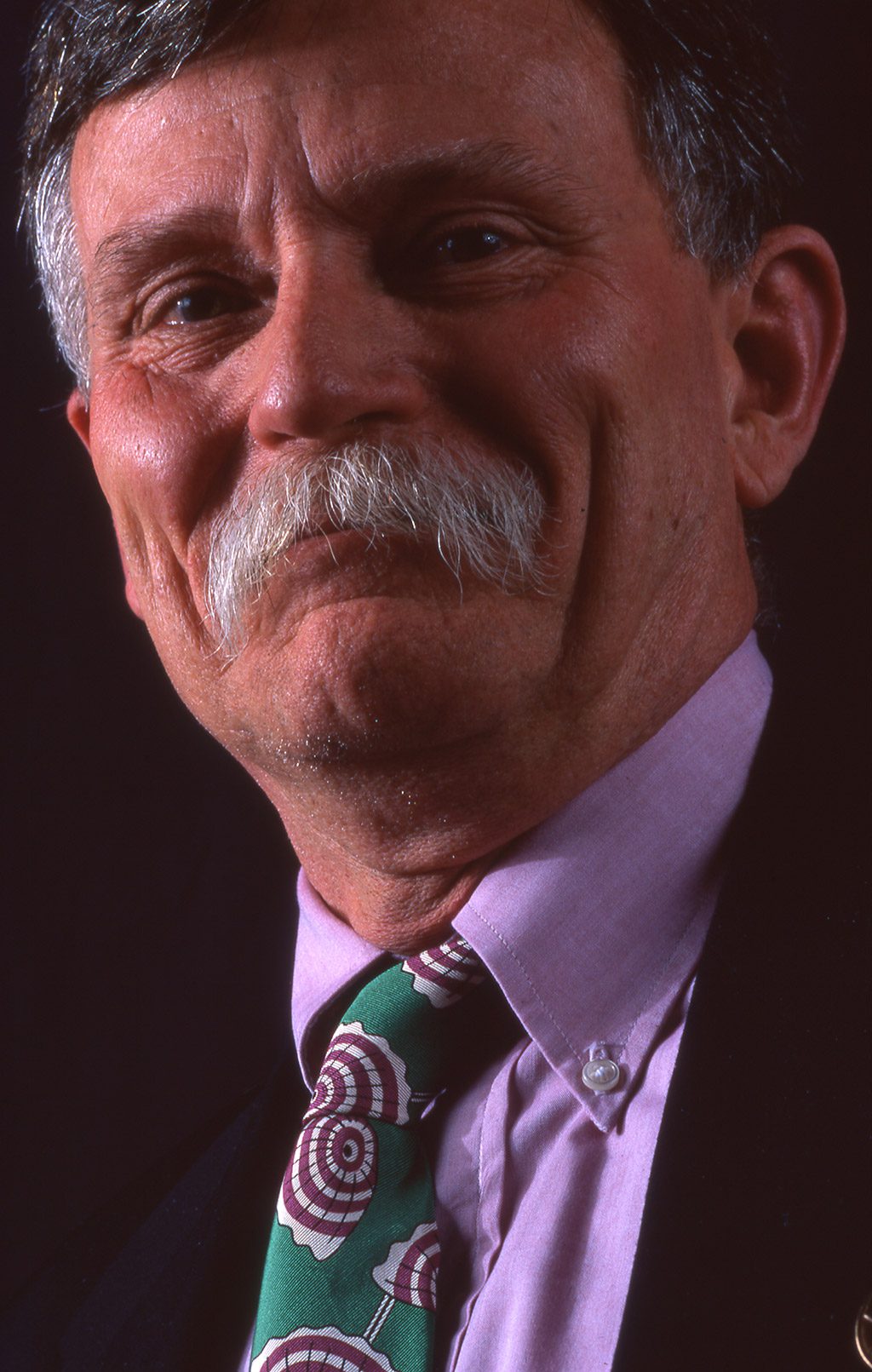
Historically, only commercial and military divers had had access to mixed gas for diving operations. But now cave divers and wreck divers wanted to go deeper and farther than air would allow them to go safely. So, Hamilton stepped out of his traditional role and entered a new diving world populated by an entirely different type of individual.
Exley, Stone, Hamilton: Wakulla Springs, Florida
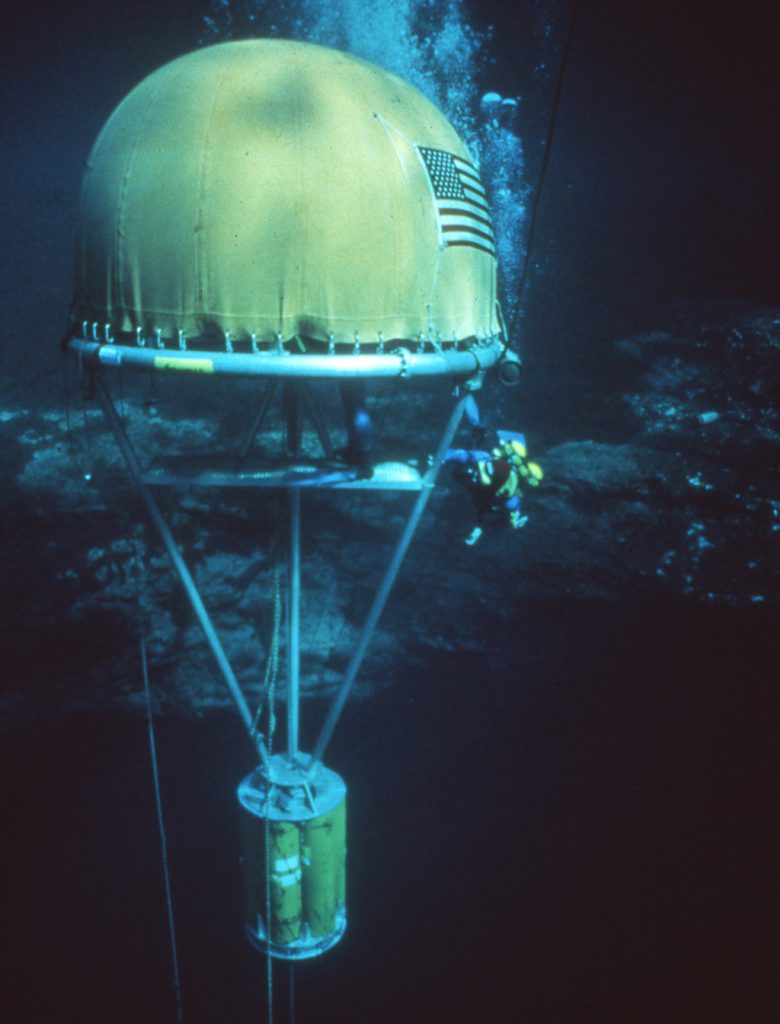
Back in 1986, Stone had obtained permission to dive in Wakulla Springs, a deep cave network which is part of the Floridian aquifer. His original priority was to test his new rebreather there and conduct some exploration on the side, but the State authorities would only approve the project if exploration was clearly stated to be the priority.
Stone agreed and amended his application. In 1987, he commissioned Hamilton to develop a custom set of mixed gas decompression tables for extreme cave dives to 100m (328ft) on open-circuit scuba with managed oxygen exposures and minimal nitrogen narcosis. The divers would also be using long-range DPVs and a variable depth habitat for decompression.
Note that this was four years before anyone even heard the term technical diving. Almost everywhere else, sport divers including ultra-deep wreck divers were still using air for everything and would continue to do so for several years yet.
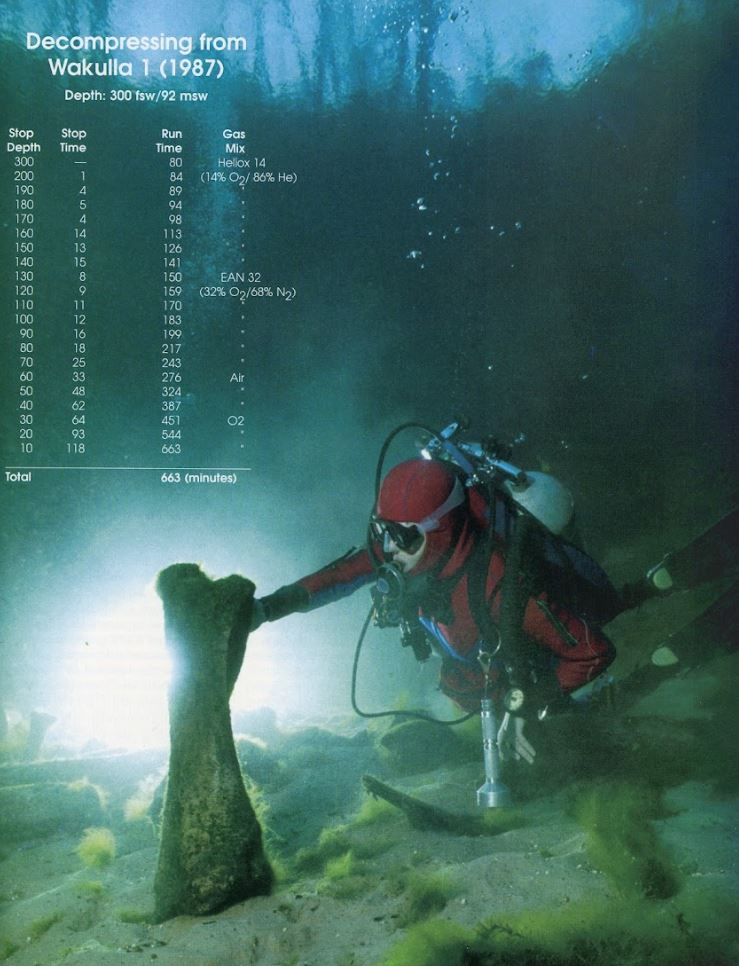
Hamilton produced what was then a radical solution but is now a well-established procedure. He drew up tables that would have divers descending on heliox but switching on their ascent to various nitrox mixtures, then air in the habitat and finally pure oxygen.
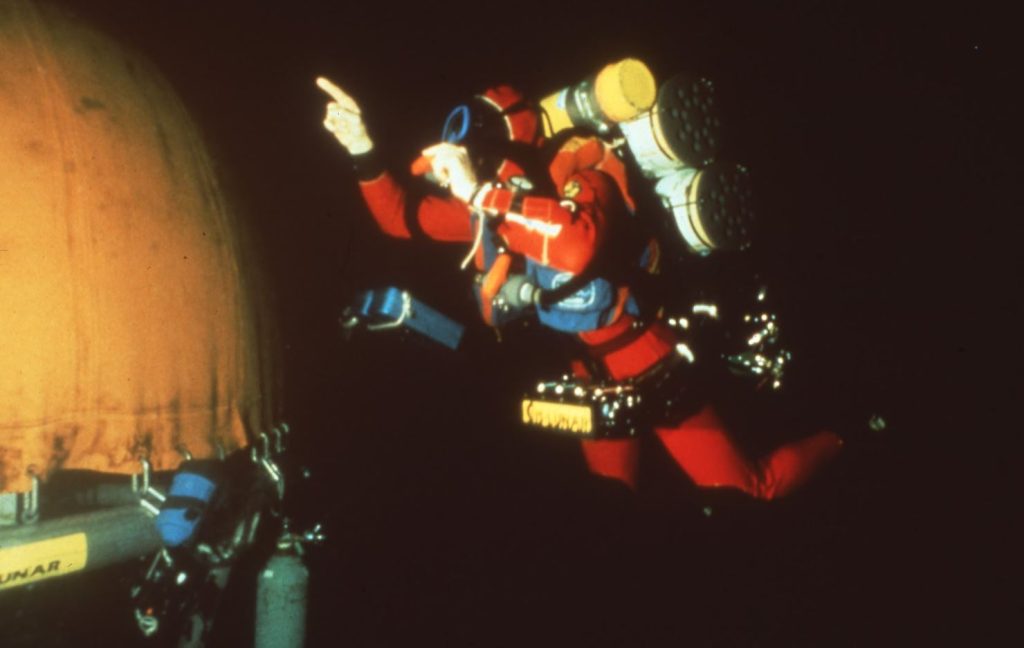
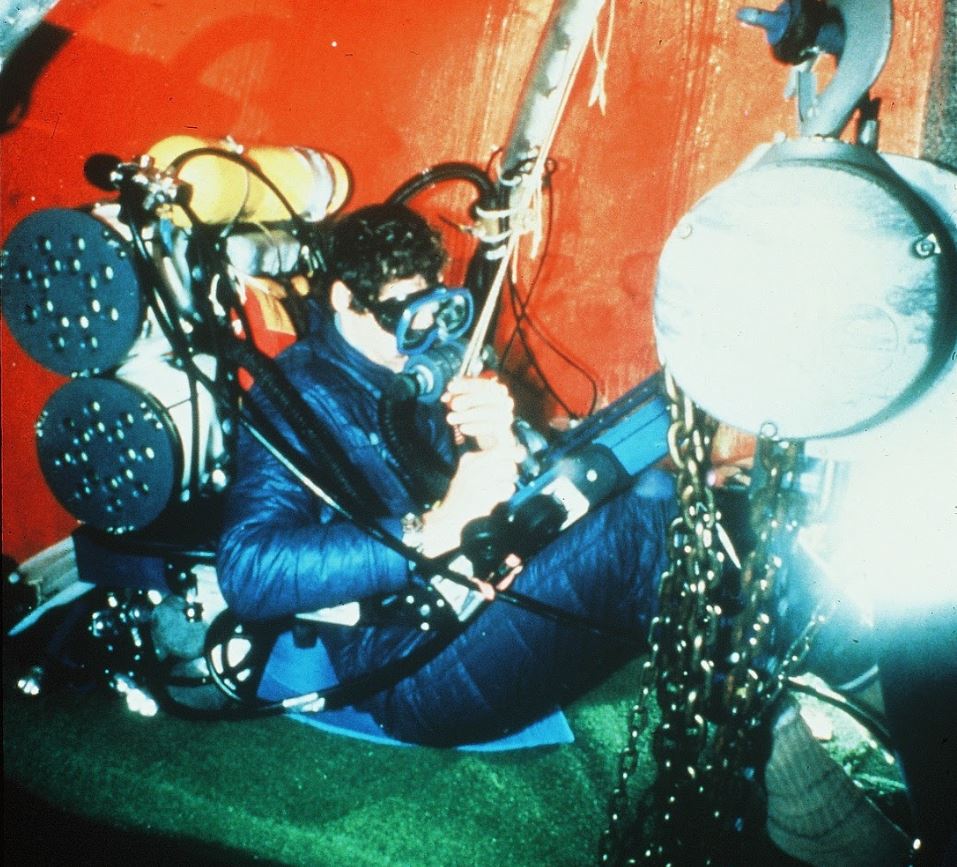
Exley was the first name on Stone’s list for the exploration team, which went on to explore over 3.3 kilometres of Wakulla cave passage at depths to 90m (300ft). It was intensive, high-risk, long-range diving. The project was a huge success and there were no cases of decompression sickness.
Stone’s main goal for the tests on his new rebreather was to find out what kind of dive time he could get on it. With the help of teammates poking him every time it looked like he was falling asleep, he managed a 24-hour dive, breaking several records in the process.
Exley, Hamilton: Nacimiento Del Rio Mante, Mexico
Exley was impressed with what the Wakulla project had achieved and, in 1988, he called Hamilton, told him what he had been doing at the Mante cave and asked for his help to go deeper.
On March 28, 1989, using tables devised by Hamilton and modified by himself, Exley completed a successful dive to 264m (867ft). His run time was 13 hours 52 minutes; his bottom mix was trimix 7/69 and he used ten different gas mixtures during his ascent, two other trimixes, five nitrox mixes, air and 100% oxygen.
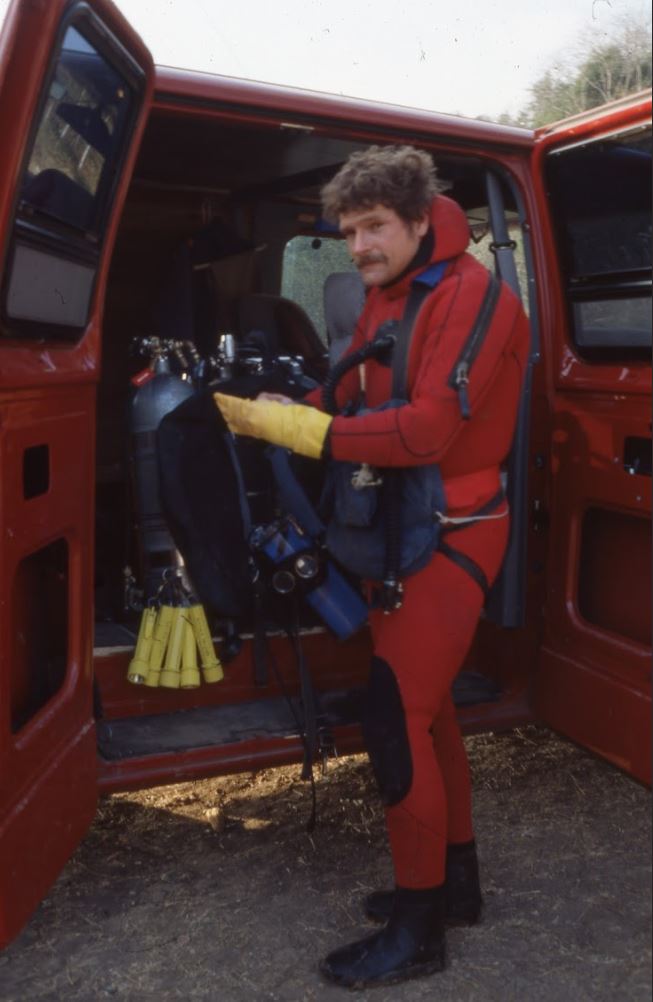
Hamilton received criticism in some quarters for working with divers outside “professional” circles. He was unperturbed. His conscience was clear. He would always begin by trying to talk divers out of their riskier projects (like Exley’s) but would do his best to help them if he assessed that, if he said no, they would do the dives anyway and possibly get hurt.
Eventually word of what Hamilton could do reached beyond the cave diving community…
Billy Deans, Hamilton: Key West, Florida
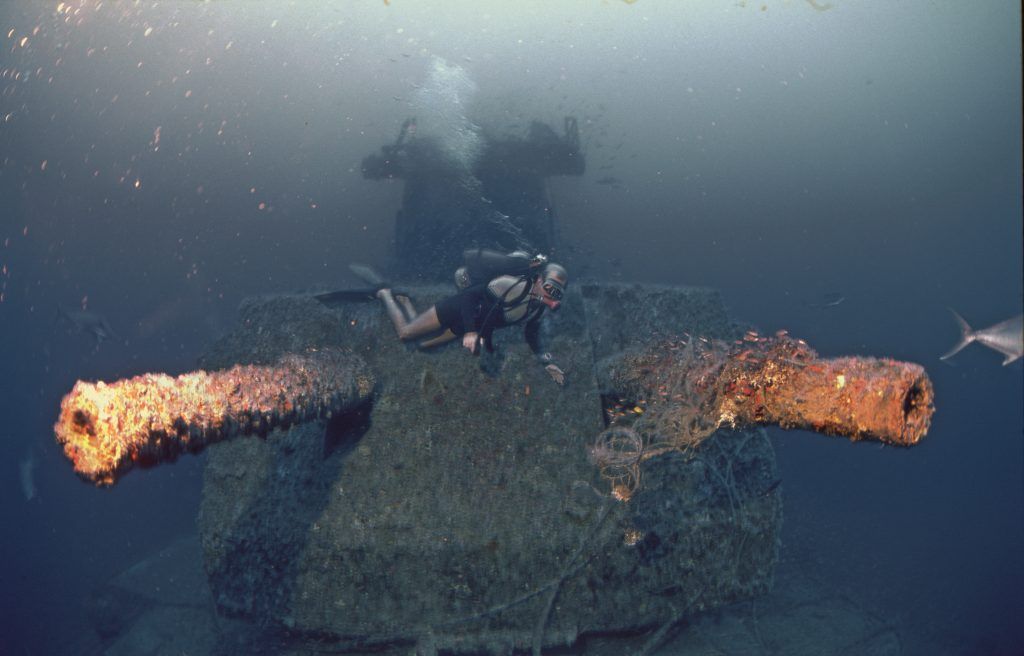
Captain Billy Deans started teaching diving in Key West in 1977. He supplemented his income by underwater hunting and he and his best friend John Ormsby started diving deeper because that is where the big tuna would be hanging out, especially around the wreck of the USS Wilkes Barre, a decommissioned WW2 vintage light cruiser sunk during underwater explosives tests in 1972 and now lying in two sections on the sea bed at 76m (250ft). Exhausted after deep air dives followed by long air decompressions, Deans looked for a solution.
He found one in the US Navy diving manual, which discussed using oxygen instead of air for shallow decompression stops. Following the manual recommendations closely, he and Ormsby found that this worked to reduce their fatigue.
Next, they started developing procedures for deep dives which involved setting up a decompression station linked to the descent line with regulators on long hoses from the dive boat supplying oxygen for divers at their 6m (20ft) and 3m (10ft) decompression stops. Safety divers would be positioned in the shallows and tasked with watching over the deep dive teams on their ascent.
In 1985, Deans led a group of Florida divers including Ormsby to New Jersey to dive the Andrea Doria. They took along with them their innovative in-water oxygen decompression system. It was the first time Deans had dived outside Florida. The trip was a disaster. Ormsby got trapped in cables inside the wreck and drowned.
Deans was distraught and quit deep diving for a while. When he returned to it, his quest to find better and safer ways to dive deep continued, given additional force by Ormsby’s death.
Via his military connections, Deans heard about mixed-gas diving and learned how effective it was in reducing narcosis and allowing divers to think more clearly and make better decisions at depth. He started thinking about how to incorporate helium-based gas mixtures into his procedures. It wasn’t easy. He had to work out how to pump the gas, mix the gas and how to use it safely once he actually had the gas available.
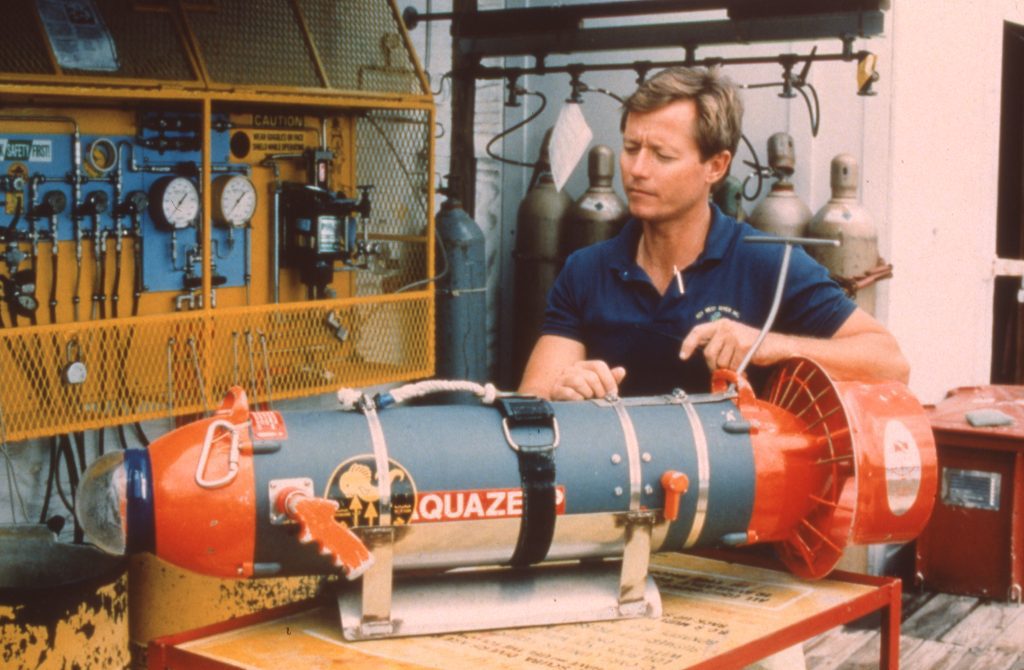
Then he heard about Dr Bill Hamilton and the magic he could perform with DCAP. He called Hamilton, introduced himself and said he wanted to commission custom mixed-gas dive tables. Hamilton was skeptical. Deans was just taking customers for fun diving and spearfishing. Going deep on mixed gas added risk. Even commercial diving operations with all their money, manpower and systems had accidents. Why not just stay shallow and safe?
Deans was prepared for this pushback. He explained in detail how he was running deep dives at the time and the steps they had taken over the years to make their procedures as safe as possible. He described using mixed gas instead of air for the deep part of their dives as a natural extension of his efforts to make the deep dives as risk-free as possible.
Hamilton listened and was impressed.
“You’ve convinced me. “Now don’t go killing yourself. Show me you can do it as well as the pros.”
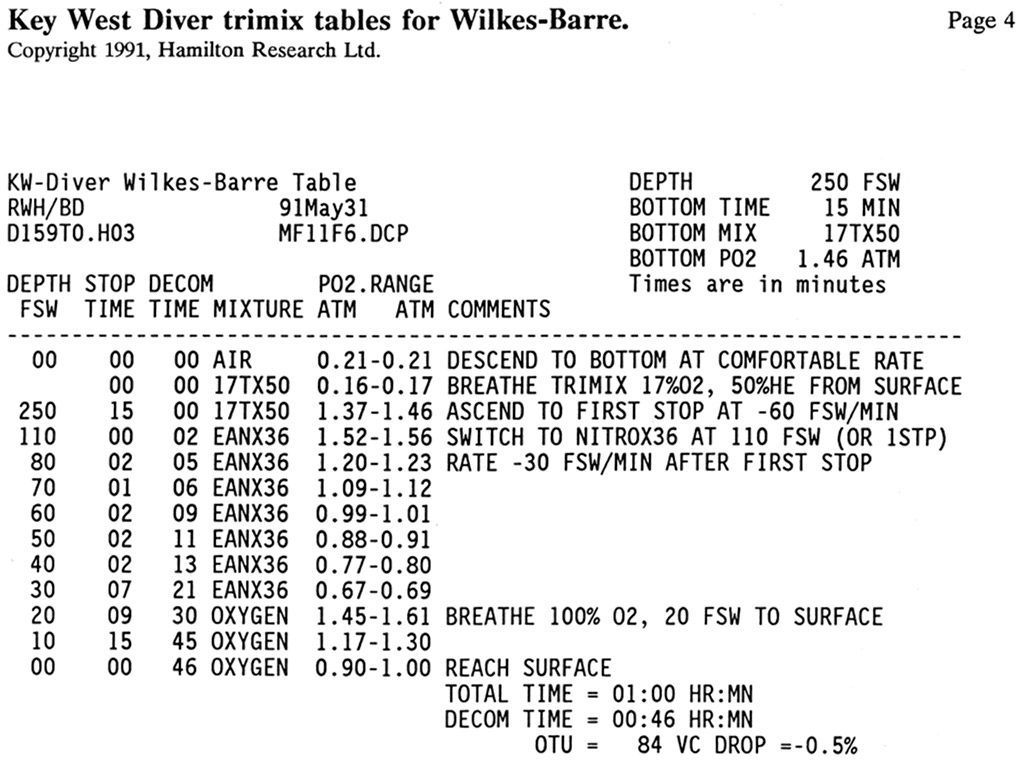
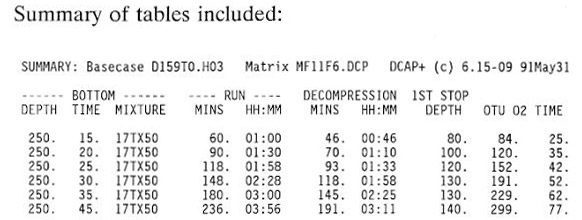
Deans showed him. With Hamilton’s tables at the core of the operation, he developed finely detailed, military-precise diver training systems and his Key West Diver shop became a Mecca for anyone interested in deep diving.
Over in California, a tech geek with a diving passion was beginning a new career as a journalist. Deans and his operation were exactly what he was looking for.
He just didn’t know it yet.
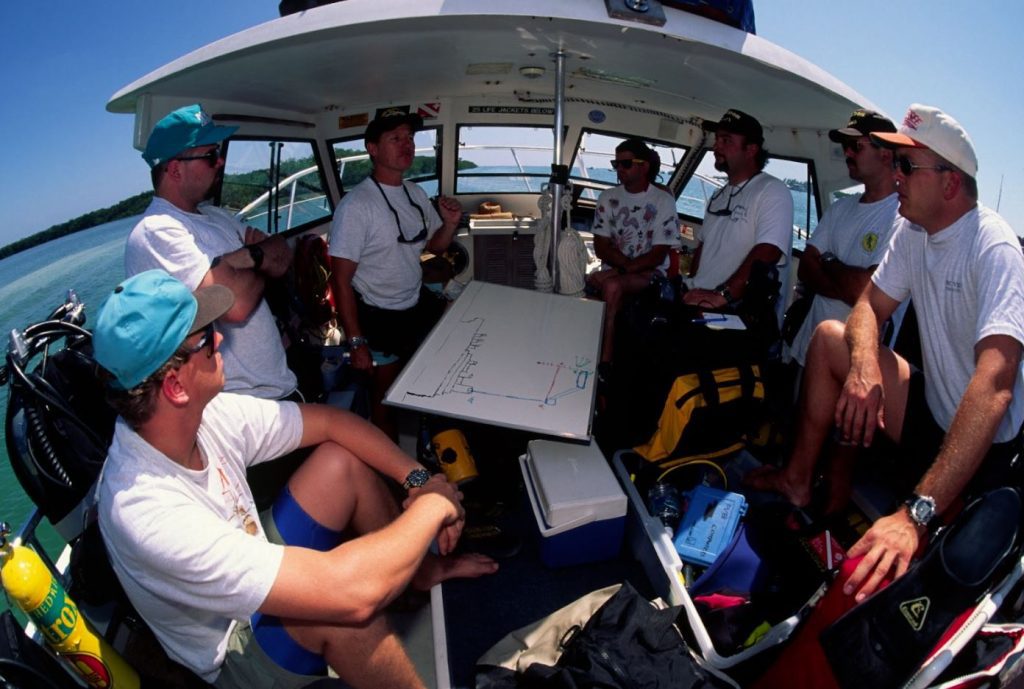
Michael Menduno, Hamilton, Deans: Santa Cruz, California
It was 1987 and Michael Menduno’s life was in flux. He was recently divorced, going through a midlife crisis and burned out after years in the computer industry. He needed a change of direction. He decided to a) get back into scuba diving, and b) become a full-time writer.
He volunteered to join Dr Bob Schmieder’s Cordell Expedition in Northern California. The team was a bunch of Bay Area geeks and Menduno was a perfect fit. They were exploring deep pinnacles in the 45 – 60m (150 – 200ft) range on the edge of the continental shelf, twenty or more miles out to sea, making planned decompression dives on air following US Navy tables. Menduno was well aware that this was rigorous, edge-of-the-envelope stuff and far beyond what most sport divers were doing at the time. He was excited and thought it was worth writing about. Surely everyone in the diving world would be interested in this.
They weren’t.
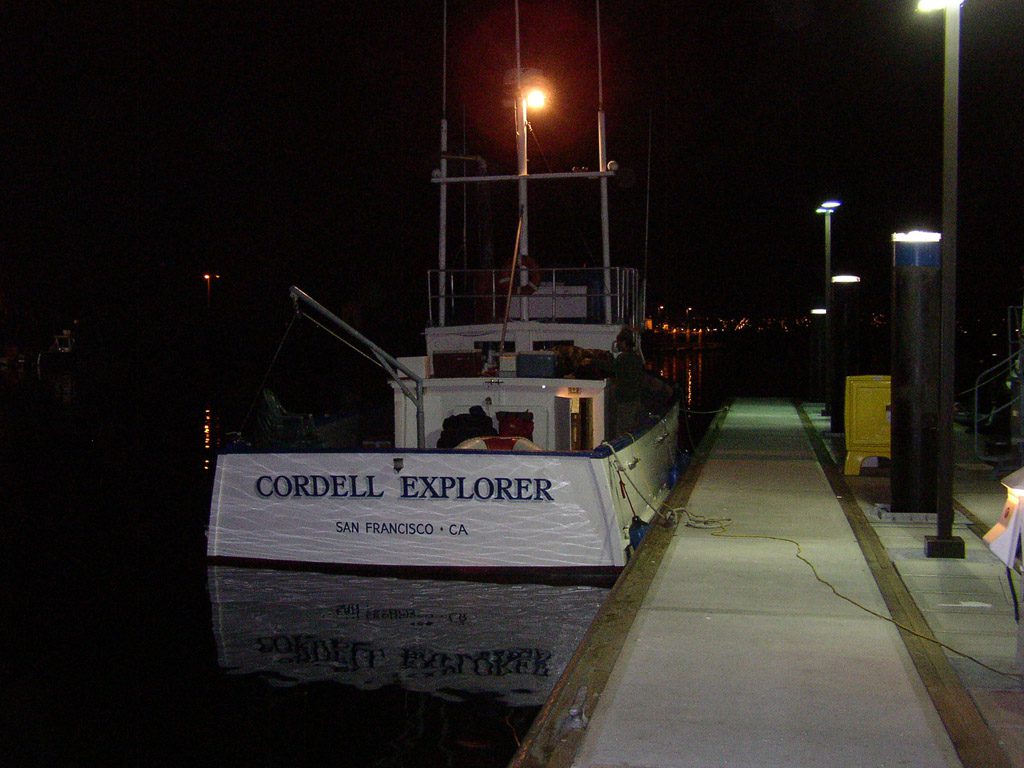
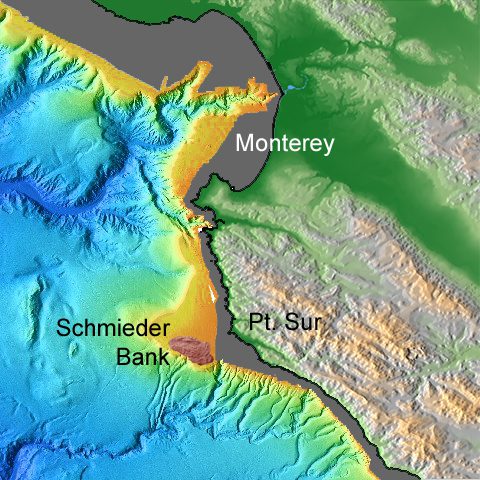
Menduno pitched his ideas to dive magazines, but they wouldn’t touch him. What he wanted to write about was way too off-trail for their editorial policy. Finally, Ken Loyst of Discover Diving magazine agreed to take a chance on Menduno and commissioned a piece. It is unlikely that he expected an article like the one he eventually received, which had a flavor that was more Rolling Stone than Skin Diver Magazine, made liberal use of both the f-word and the d-word (decompression) and compared narcosis with psychedelic drug use, nevertheless, he ran it in the Jan/Feb 1989 issue, albeit with a “do not try this at home” banner caveat on each page.
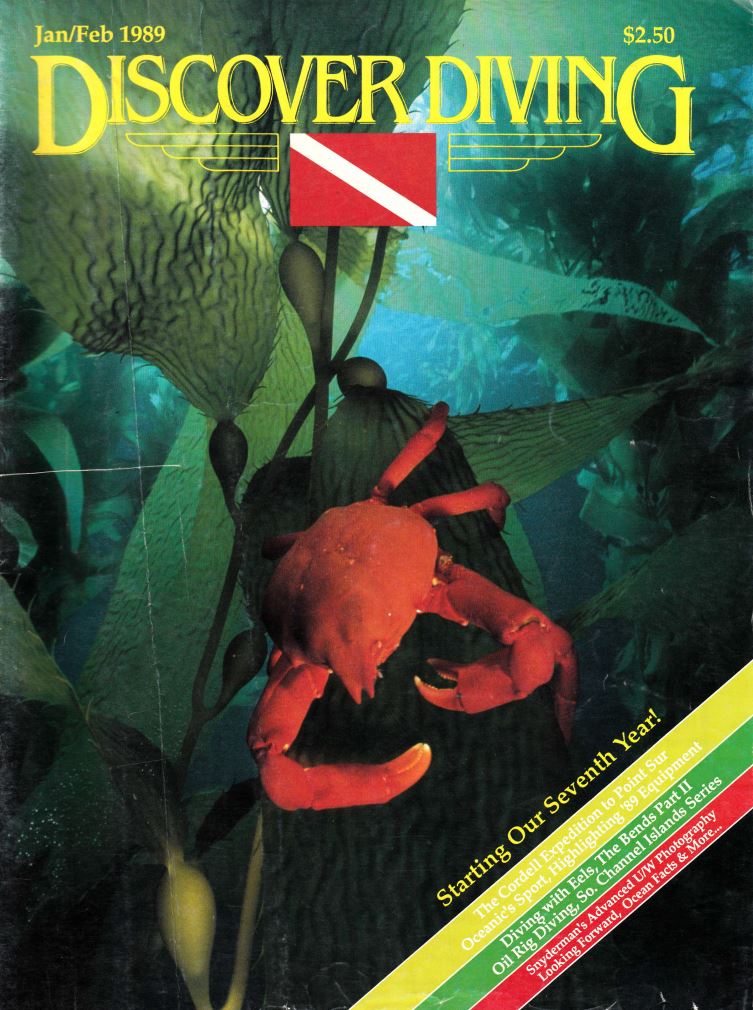
But he was convinced enough to commission Menduno to write a series on diving technology and, that was that; the computer geek’s scuba journalism career was off and running.
A couple of years later, as technical diving burst onto the scene, Loyst’s Watersports Publishing would capture the zeitgeist with the release of a series of books on diving topics hitherto considered untouchable, such as mixed gas, deep diving and solo diving.
Armed with his commission from Loyst, Menduno hit the road. His quest to learn what extreme sport divers were doing elsewhere than California took him to Mexico, where he did cavern and cave diver training and along the way, he picked up a copy of Bill Stone’s book on the 1987 Wakulla Springs Project. In Menduno’s words: it “absolutely blew my mind!” His first reaction was: “You can do that?”
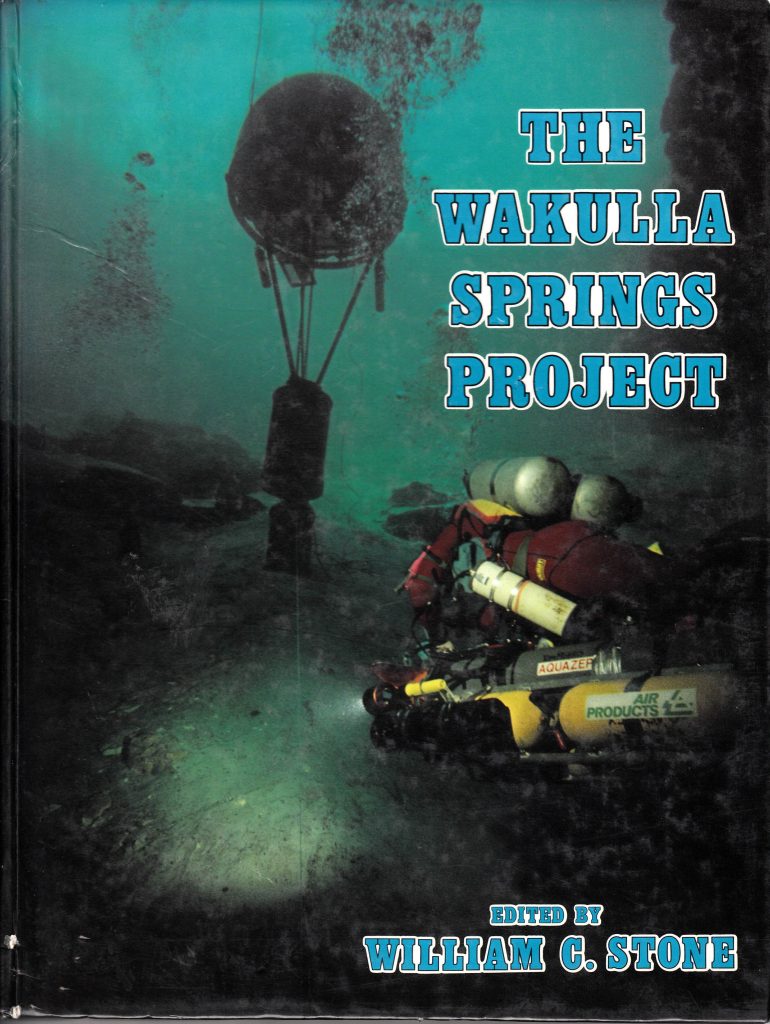
Stone’s book placed Dr Bill Hamilton squarely on Menduno’s radar screen. By this time, diving’s newest journalist already had a plan in his head for a magazine, the likes of which the sport diving world had never seen. Part revolutionary tome, part messianic call, with a style redolent of rock n’ roll and techno-speak. He was going to shed light on the divers who were doing all these incredible things in the shadows and create a forum whereby disparate diving communities out in the Badlands of the diving world could discuss what they were doing and learn from each other. The divers, scientists and equipment junkies who were pushing the limits of sport scuba would not only be the subjects of the features, they would also be the authors, the correspondents, the readers; even the advertisers.
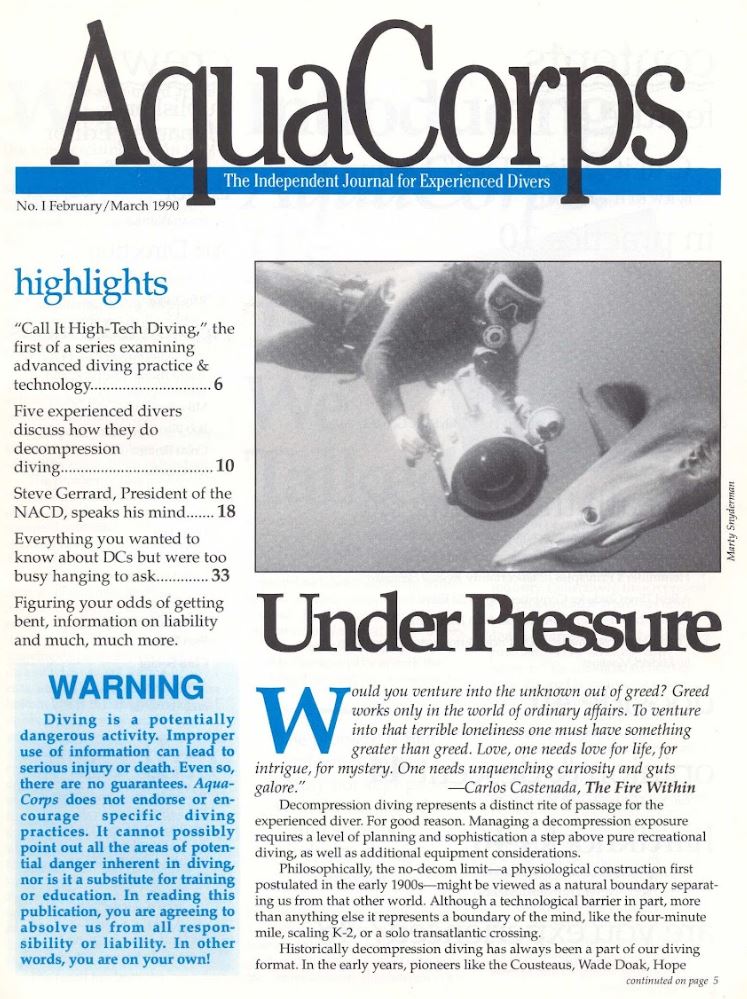
Hamilton wrote the lead article “Call it High-Tech Diving” for the first issue of Menduno’s aquaCORPS Magazine (The Independent Journal for Experienced Divers), which came out just in time for the January 1990 DEMA Show in Orlando, Florida. A lot of people walked past Menduno’s stand and picked up a copy. One of the curious passers-by was Billy Deans. A few weeks later, he called Menduno and invited him to come over to Key West. He thought Menduno might be interested in what he was doing.
Deans, Menduno: Key West, Florida
Every artist has one big idea, although they say Picasso had two. Deans’ big idea was how to make deep mixed gas ocean dives safely. Once he had Hamilton’s tables in hand, he modified his deep-air and oxygen decompression procedures, devised a standard equipment configuration using standard gas mixtures and developed a team-based training model. The system was the product of years of trial and error; it was repeatable and adaptable.

It was also rooted in the concept of safety. Every new recruit would be shown the video of the recovery of John Ormsby’s body from the steely-grey waters above the Andrea Doria so that they understood precisely what they were getting into and knew the consequences of making a mistake. Nobody who watched the video could ever forget that. It was a powerful introduction.
As soon as Menduno saw what Deans was doing, he knew he had found his and aquaCORPS’ spiritual home. He was inspired. This was ground zero as far as mixed gas diving was concerned. Deans was at the cutting edge, and he was pushing the frontiers out further and further. This was the place to be. Here, he could soak up the knowledge and meet all the key people in the field. Not only that, Florida cave country—another of the cradles of this revolution (as Menduno would often call it)—was just a couple of hundred miles up the road.
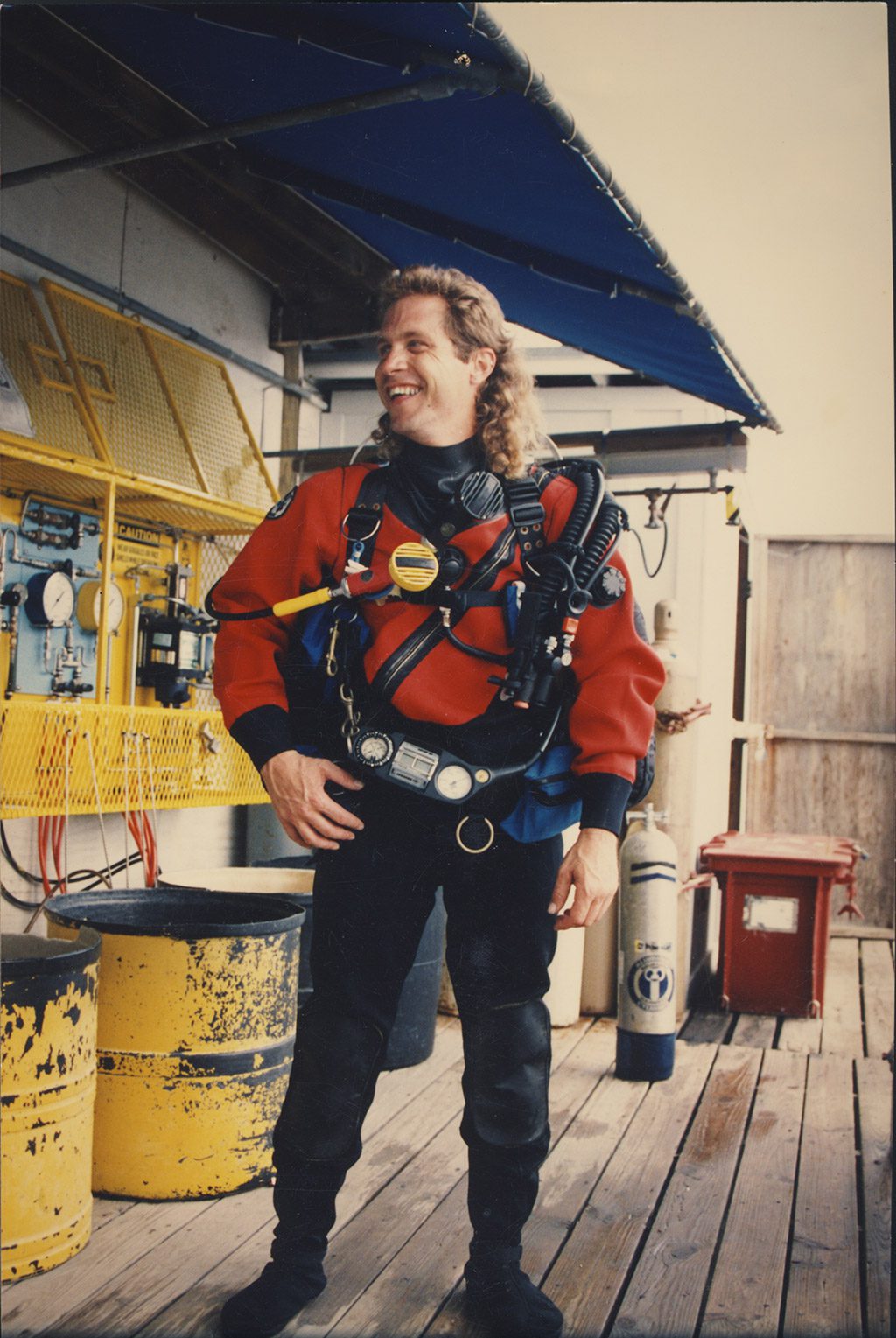
Deans invited Menduno to stay at his home and the third issue of aquaCORPS began life in Deans’ living room. For a while, Menduno would travel back and forth between Key West and Santa Cruz, but, as interest in technical diving started to explode, he knew there was only one place to be and he did not want to miss a thing. In mid-1991, he rented an apartment in Key West and would stay there for the next four and a half years.
In turn, Deans was excited to have someone around who had made it his mission to get word of extreme sport diving out to a wider audience. Deans saw himself and Menduno as a double act. They were “the pen and the sword”, as he liked to say.
Deans was first and foremost a businessman. He and Ormsby had started deep diving because—as all dive shop owners everywhere in the world quickly discover—just teaching scuba could not pay the bills and they had to supplement their income by selling the fish they speared. They could earn more money from catching bigger fish and bigger fish hung out in deeper water, so that is where they went.
Deans hoped his big idea—how to do deep dives safely—could lift him out of the hand-to-mouth existence of a dive shop owner and become big business if more people heard about it via Menduno’s magazine.
Whatever happened, one thing was certain. The elements in the crucible were generating sparks and ever more people were taking notice.
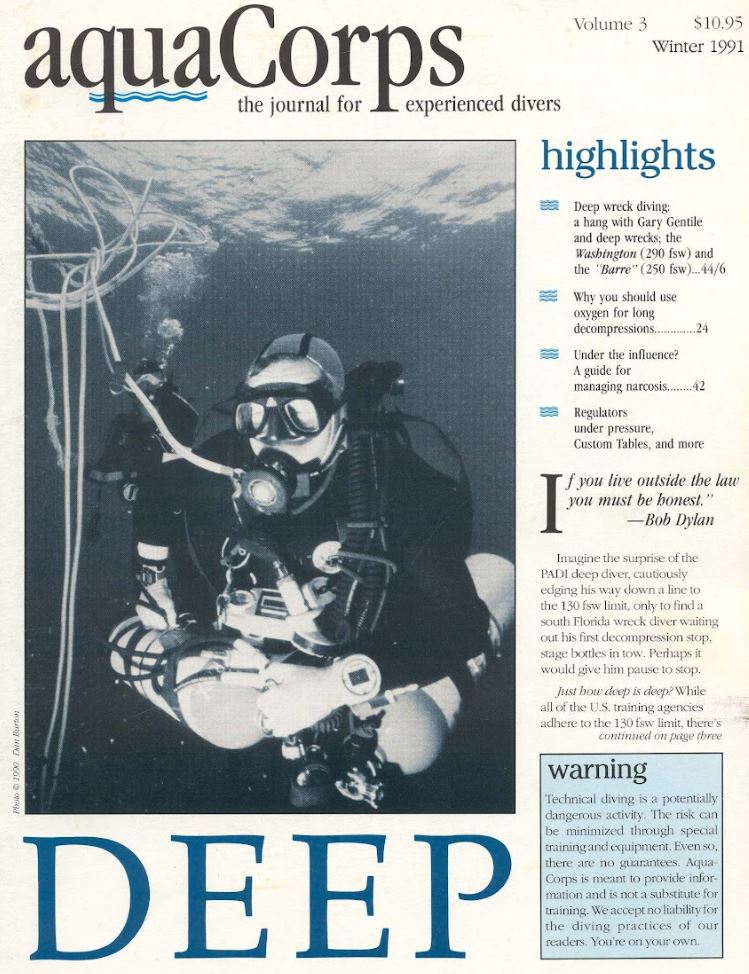
What happened next?
Exley phoned Key West Diver to talk to Deans about mixed gas. Menduno, now on staff, picked up the phone. Exley visited and dived the Wilkes Barre with Menduno and Deans on board. The dive boat almost got run down in the open ocean by a cargo vessel while Exley was on deco beneath. Exley saw this episode as vindication of his preference for diving caves, rather than shipwrecks. He thought caves were much safer.
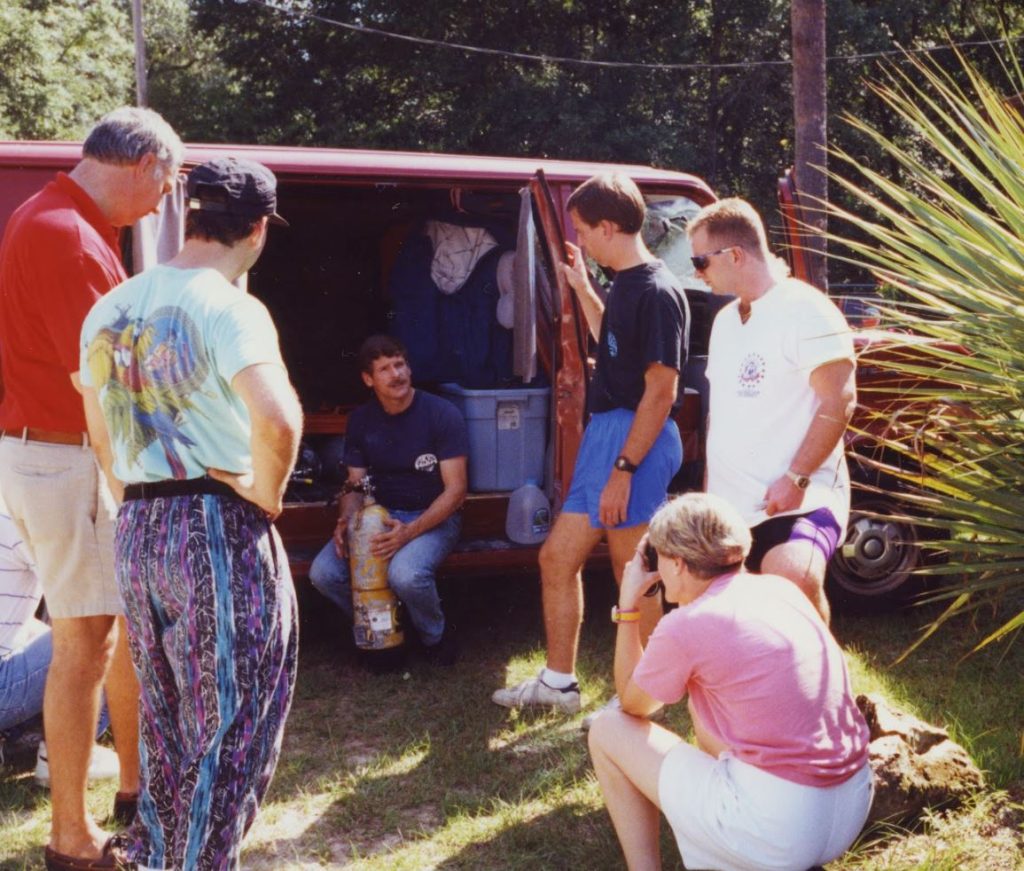
Exley ran courses in Florida cave country teaching Bernie Chowdhury and other northeast wreck divers how to use trimix. He received criticism from others in the cave diving community for doing this, but taking a leaf out of Hamilton’s book, Exley’s response was along the lines of—they are going to do it anyway, best to teach them how to do it as safely as possible. Exley assured his students that, as soon as a training agency started issuing trimix diver certificates, he would make sure they each got one.
Deans joined the Board of Directors at Tom Mount’s IANTD. His Key West Diver training courses and Hamilton’s tables and schedules would all be integral to IANTD’s mixed gas diver and instructor certification programmes, the first of their kind.
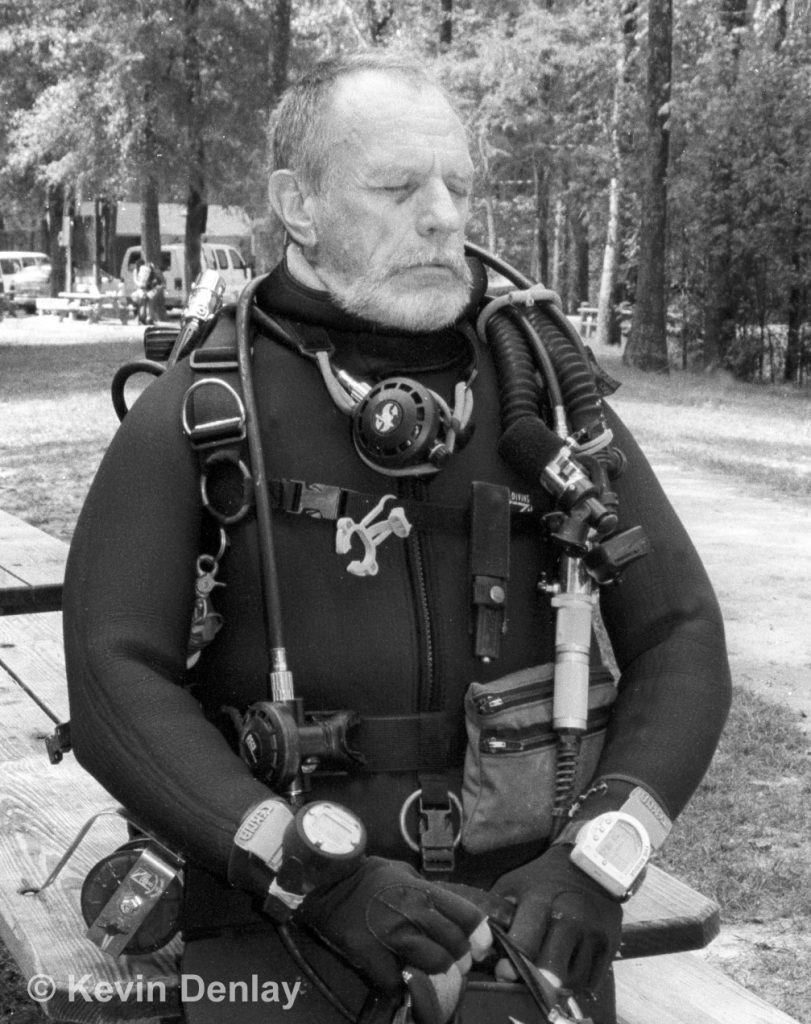
In 1991, Chowdhury ran the first trimix expedition to the Andrea Doria. The divers conducted extensive penetrations of the wreck using reels and lines; procedures they had learned in their Florida cave diver training courses. Both Deans – on his first return to the ship since Ormsby’s death – and Menduno were on board for this momentous conjunction of the cave diving, mixed gas diving and wreck diving worlds. The meeting of minds on board was not always amicable. Some of the seasoned northeast wreck divers on board were suspicious of the – to them – new techniques.
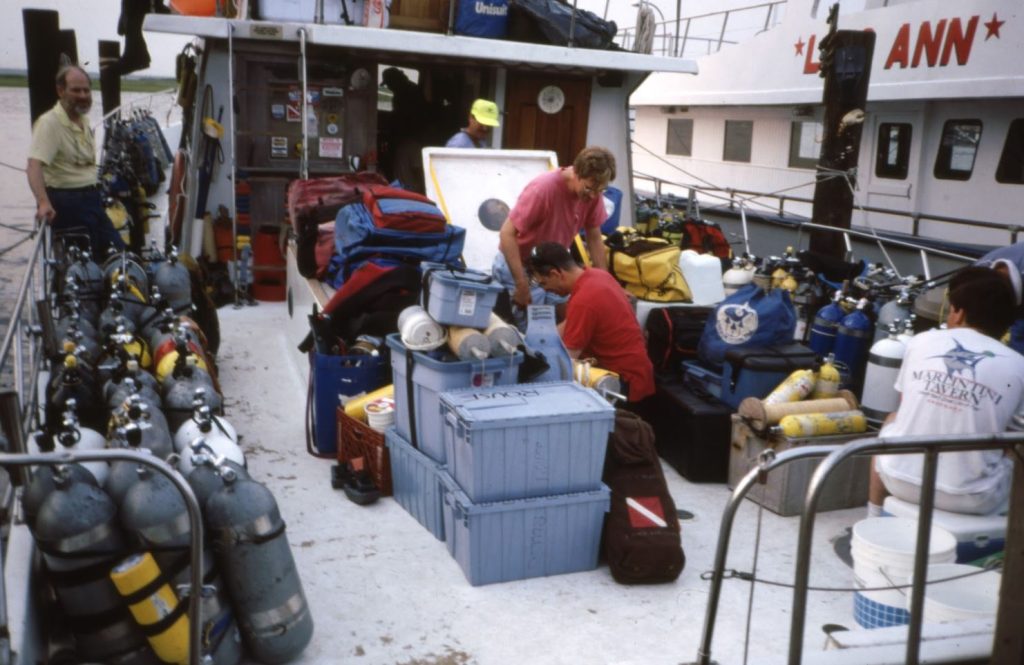
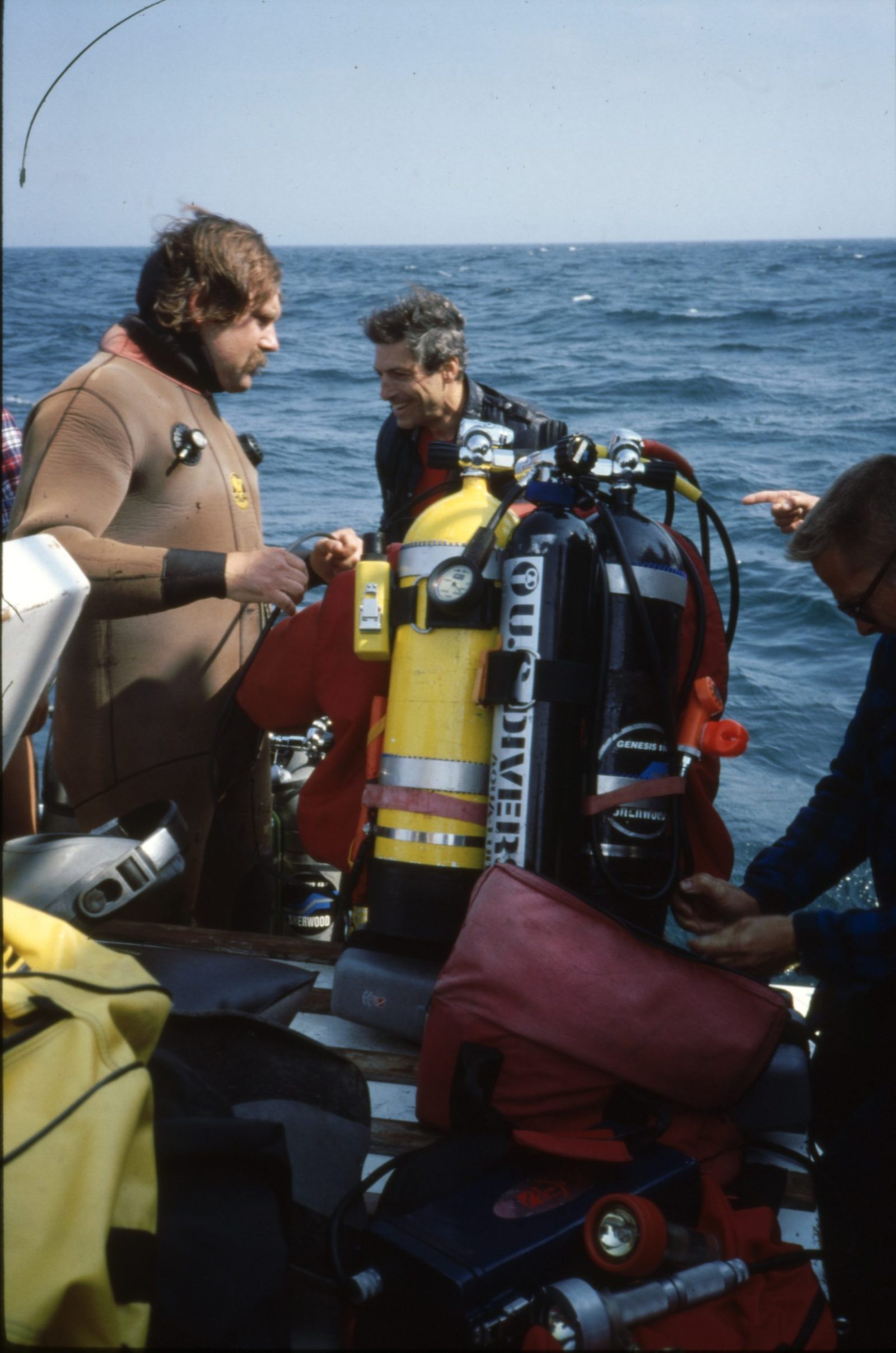
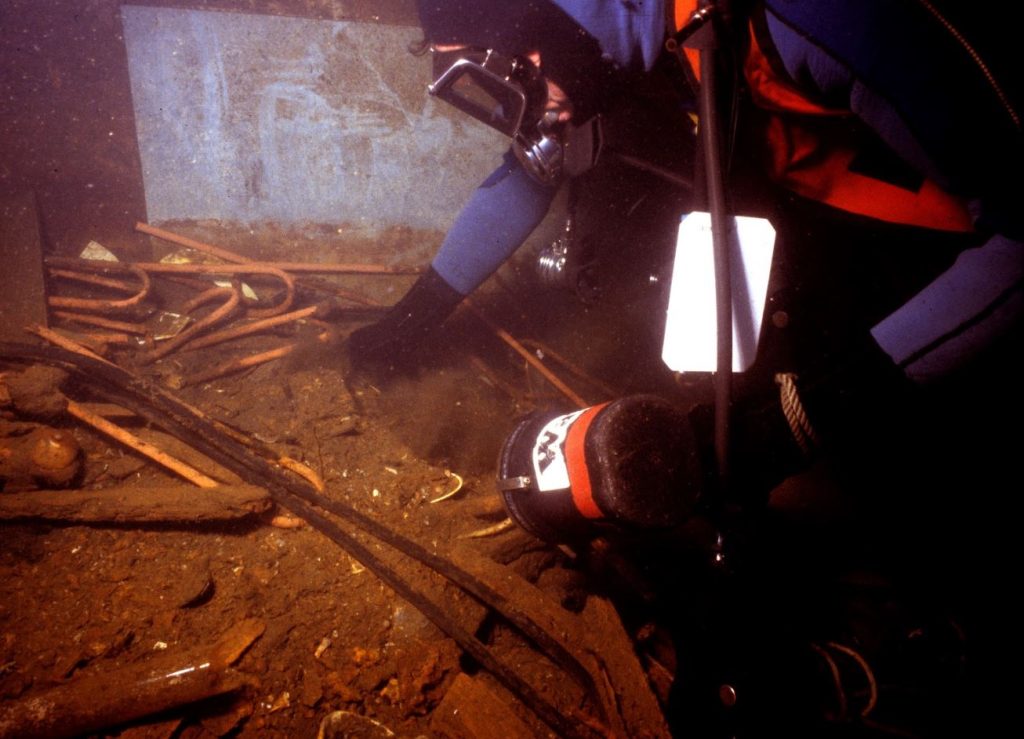
Deans stayed on in the northeast to run trimix courses for leading deep divers in the area. The students included writer/deep diver Cathie Cush and explorer and future Deep Sea Detectives TV star John Chatterton. For just $100, attendees bought a golden ticket to the future of sport diving in the form of a theory class plus a loose-leaf binder with photocopied articles and dive tables. No certificates were handed out. Like Exley’s students, if they wanted a card, they would have to wait. Nor did the course include any actual trimix dives, as helium fills were hard to come by. Nevertheless, that single Benjamin slipped into Deans’ hand would change their lives.
Both Deans’ and Exley’s students got their cards as soon as IANTD started running trimix courses. Deans was instructor #003 and Exley was instructor #005.
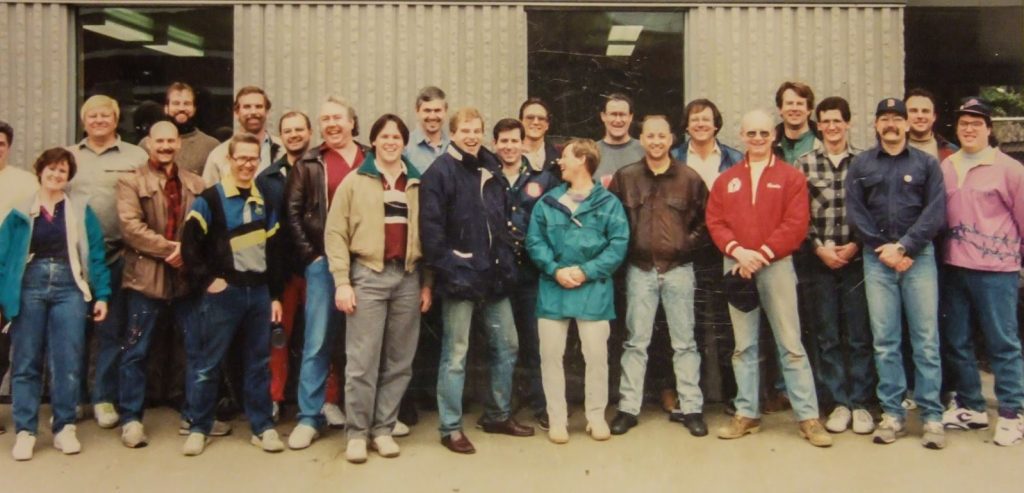
The accelerated decompression tables and gas-switching procedures that Hamilton devised for Exley, Deans and others became widely available and brought deep caves, reef walls and shipwrecks all over the world within reach of sport divers. Thanks to Hamilton, divers now had a much bigger playground to frolic in.
In Houston in January 1992, Hamilton accepted Menduno’s invitation to chair the nitrox workshop hastily convened following a DEMA nitrox ban which was subsequently rescinded. The workshop laid the foundations for nitrox to become part of mainstream sport diving. It was partly funded by Richard Nordstrom, CEO of Bill Stone’s Cis-Lunar Development Ltd.
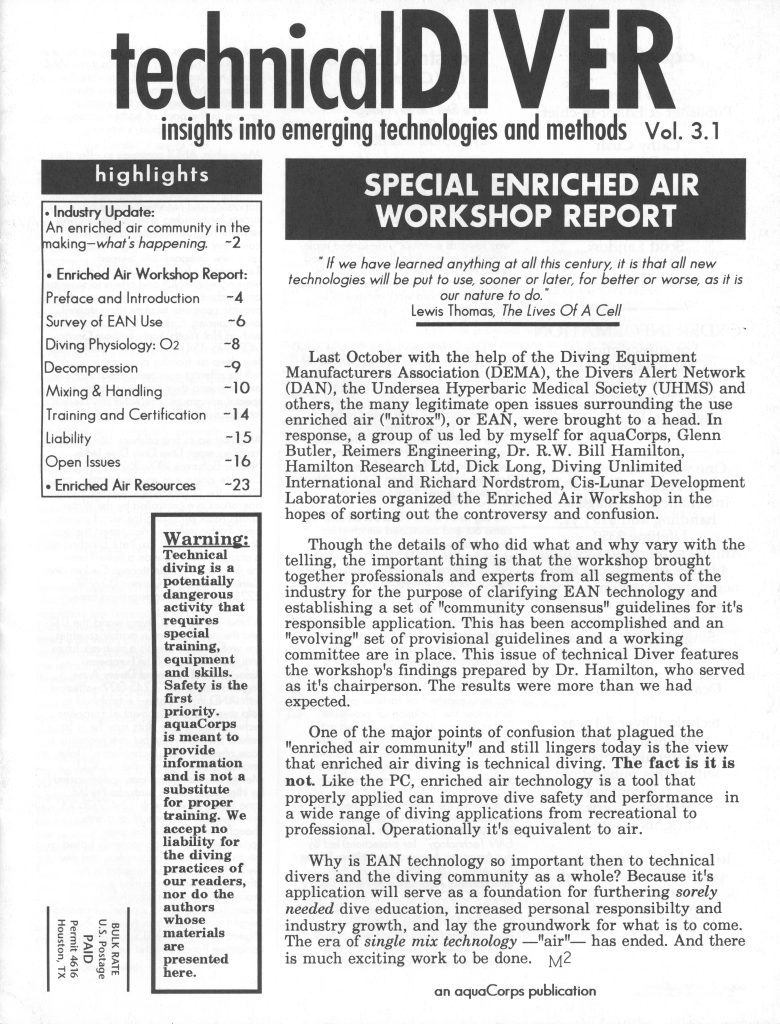
Menduno’s aquaCORPS magazine became the mouthpiece and fount of knowledge for technical divers around the world. Over the years, it carried multiple interviews with Exley, Deans, Hamilton, and Stone.
After ten years, four versions and costs amounting to more than US$100,000, Stone finally built a machine that he was confident could handle the Huautla cave, get him through the San Agustín sump and help him “place his boot where no one had gone before”. In April/May 1994, he succeeded. With a million-dollar budget, a lot of big-name sponsors and a large team, Stone and teammate and partner Barbara am Ende used Cis-Lunar Mark IV rebreathers to push the exploration of the deepest cave in the Americas beyond all expectations.
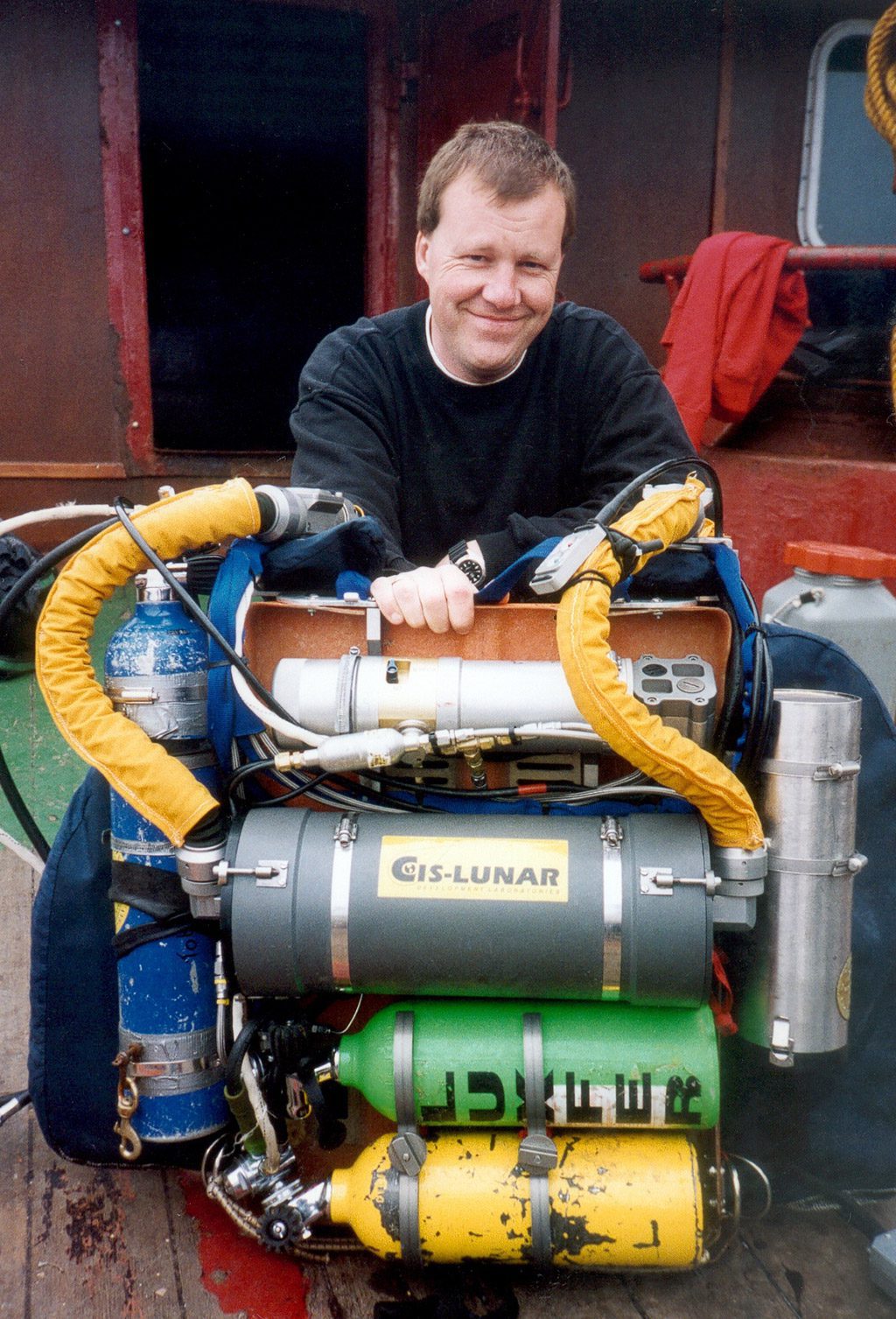
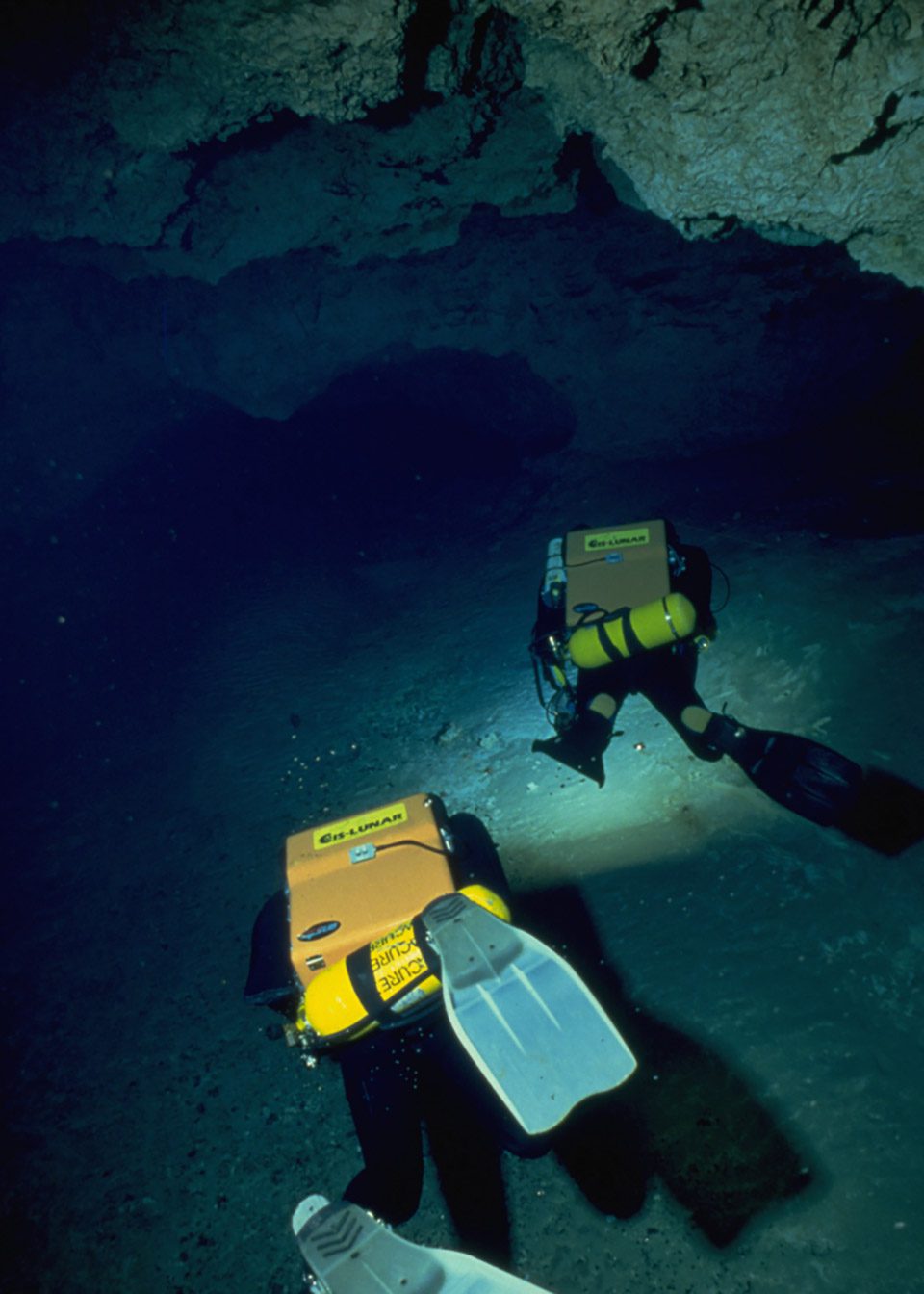
And…in the end
By the end of the 1990s, none of the five pioneers was involved in sport diving.
Exley was dead, having failed in an attempt to extend his own world depth record. On April 6, 1994, at precisely the same time that Stone was about to venture into a previously unknown section of the Huautla Cave, Exley and his friend Jim Bowden were also in Mexico descending into a cave called Zacatòn, aiming to bottom it out or reach 1000ft, whichever came first. Each was diving independently. Bowden ascended safely with a new record of 282m (925ft). Exley passed into legend. He is still regarded as the greatest cave diver of them all.
Stone’s pioneering work generated influential ripples. Wakulla 1987 proved that mixed gas diving was a reliable technology and Huautla showed the enormous potential of sport rebreathers. But his brush with scuba diving was never more than incidental. This was not his world. He was primarily a caver and an engineer. His search to reach the bottom of the world continues today but, in 1999, he broadened his scope, formed Stone Aerospace and began turning his attention to outer space as well as inner space, building vehicles that could go where humans could not go, and do things that humans could not do, not only on this planet but on other worlds too.
By 2000, Hamilton was semi-retired but still much in demand for chairing conferences, speaking at events, and receiving awards.
Deans had begun nurse training, having quit professional diving following a year in which he lost another friend to the sport and his dive shop was badly damaged by a storm. Nursing provided him with a steady paycheck, a pension, and a positive life change.
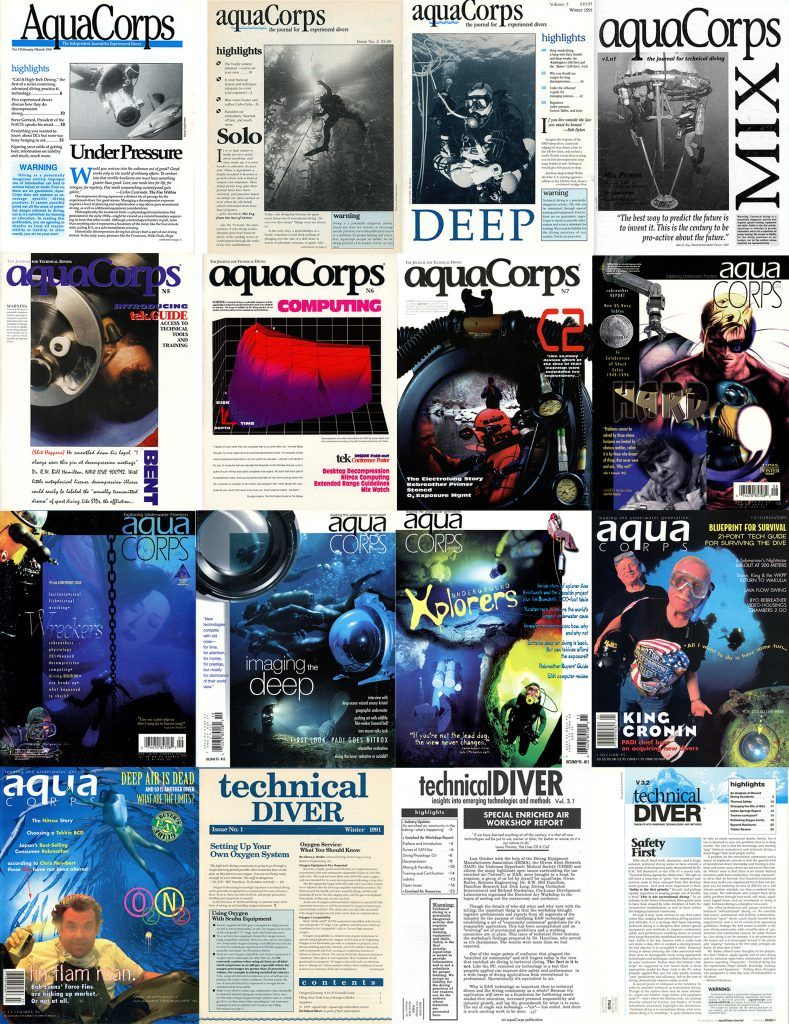
Menduno shut down aquaCORPS in 1996 after producing a dozen issues of the magazine and a handful of newsletters, all of which have become much sought-after collectors’ items. By the time of the magazine’s demise, mixed-gas diving had become accepted by and assimilated into the mainstream diving world. It was hard to find funding for a revolution once the revolution was over.
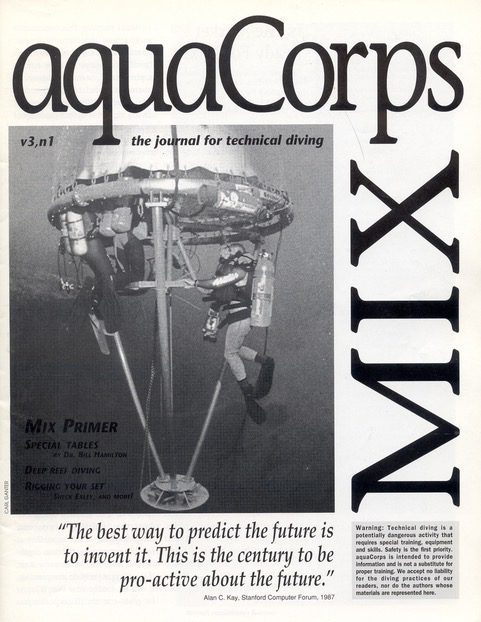
aquaCORPS # 4 MIX
aquaCORPS #4 MIX was published in JAN92 just before the “Enriched Air Nitrox Workshop,” held prior to DEMA in Houston, Texas. Note that each issue of aquaCORPS had a theme. The MIX issue focused mixed gas technology. It was also the first issue of aquaCORPS that included the tagline, “The Journal for Technical Diving,” a moniker coined by founder and publisher Michael Menduno in 1991.
“Technically Speaking” is available worldwide in paperback, hardback and e-book versions via booksellers such as Amazon, Apple, Kobo, etc: Technically Speaking on Amazon
DIVE DEEPER
InDEPTH: Technically Speaking – Talks on Technical Diving Volume 1: Genesis and Exodus
InDEPTH: The Early Days of Technical Trimix Diving by Michael Menduno
InDEPTH: The First Helium-based Mix Dives Conducted by Pre-Tech Explorers (1967-1988) by Dr. Christopher Werner.
InDEPTH: aquaCORPS “Call it High-Tech Diving” by RW Bill Hamilton (1990)
aquaCORPS digital archives: FREE Downloads
TDI|SDI: aquaCORP’s Pioneer Interviews
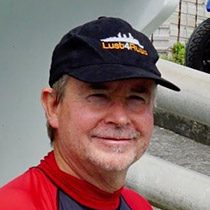
In the mid-1990s, Simon Pridmore was a pioneer of technical diving in Asia. Today, he is one of diving’s most prolific writers, with a five-volume Scuba series, several guides for traveling divers, a biography, a novel and even a couple of divers’ cookbooks to his name, as well as Technically Speaking. He and his wife Sofie live at the edge of the dark blue ocean in the deep south of Taiwan. Learn more about Simon and his books via his website or by signing up to his Scuba Conversational newsletter on Substack.

